Day 4 of our trip to CDMX (Ciudad de Mexico = Mexico City) was defined by “whatever we hadn’t managed to do” mishmash of stuff. We also did the most walking on this day.
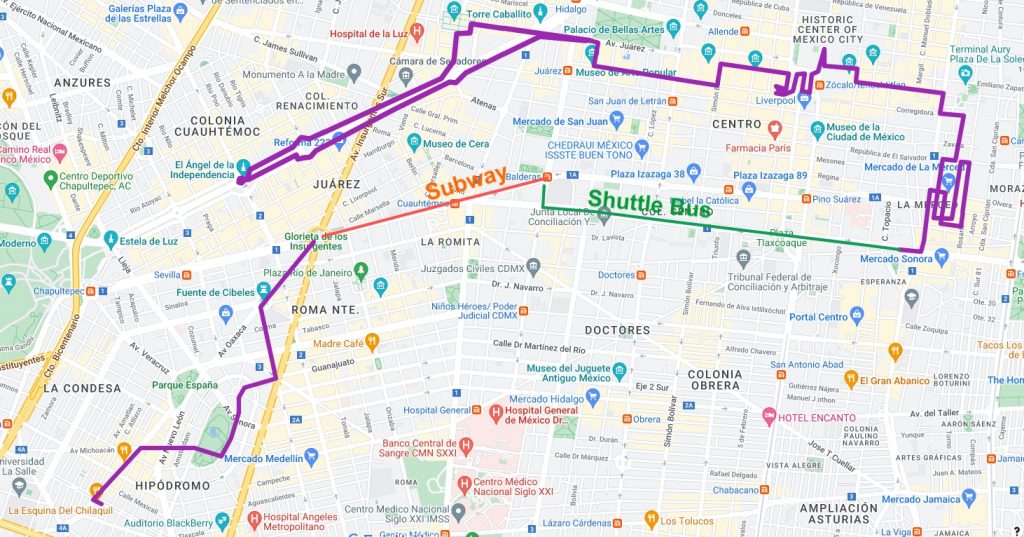
Esquina Del Chilaquil
This street-corner breakfast stand in southern La Condesa was larger than the tent covering it. Mark Weins and a Netflix show called Heavenly Bites Mexico both covered it in depth with enthusiastic endorsement. We arrived to find a line just like in every video and photo coverage of it. Thankfully, due to the simplicity of the menu, the line moved pretty fast.
Actually, I take that back. There was no menu. There was no price tag. This food stand did not even have a sign bearing its name. It was the ultimate “if you know, you know” situation. What brought foodies from around the world here was its inventive torta with chilaquiles stuffed inside. Sounds gross? Yup I agree, but who am I to judge when there was a constant line of eager diners? Oh and there was a whole squadron of cops who illegally parked in the intersection to hover around this stand. Even if you don’t trust the food bloggers, you gotta trust the cops to know where the best eats are.
We got one with red chilaquiles and another with green. They came with thin cutlets of deep-fried chicken and pork, but we couldn’t tell which was which. The tortilla chips in chilaquiles had mostly disintegrated at this point and turned into a thick sauce, which supposedly was the central magic to this dish. I appreciated the unique experience, and Phil really loved it.
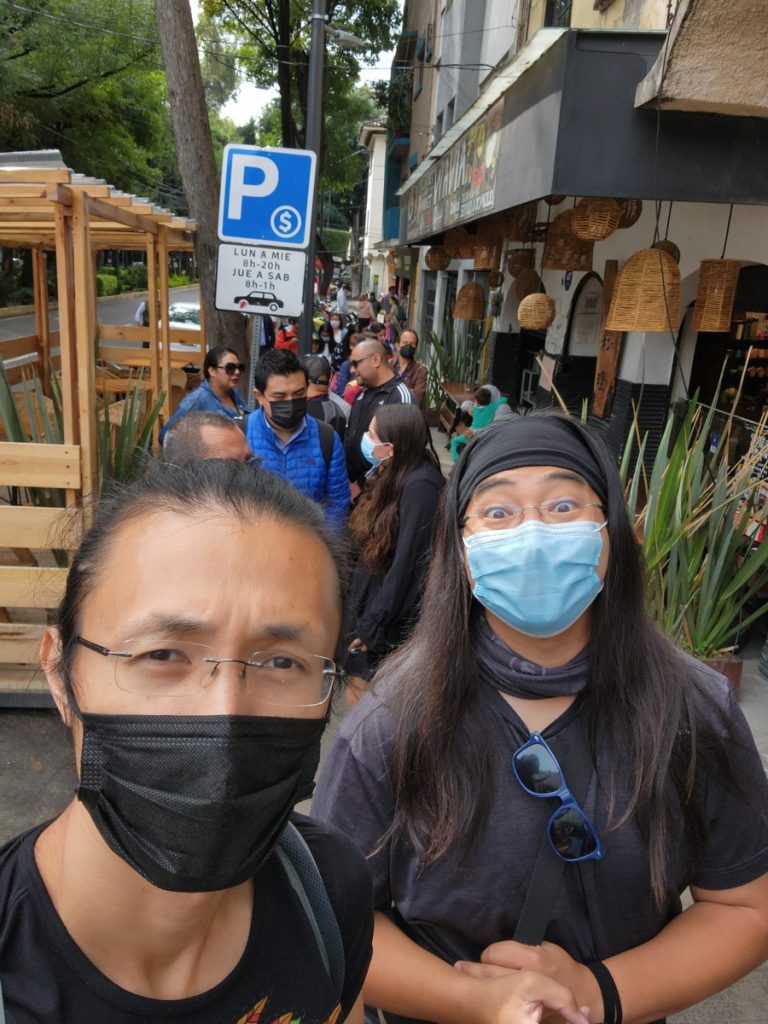
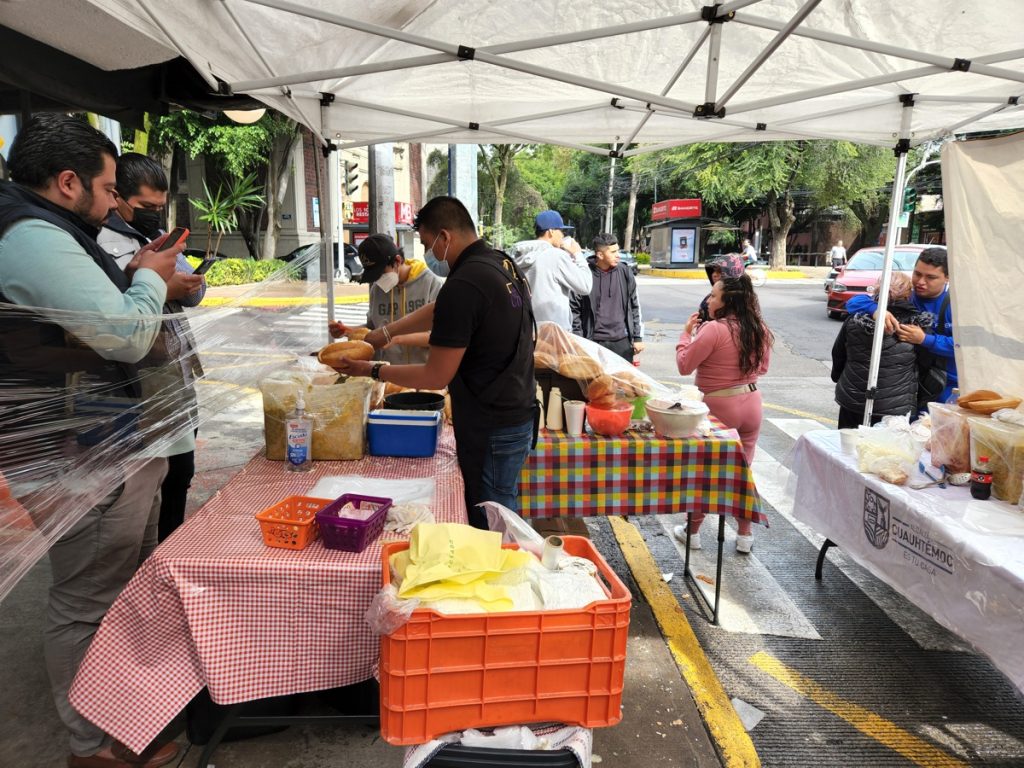
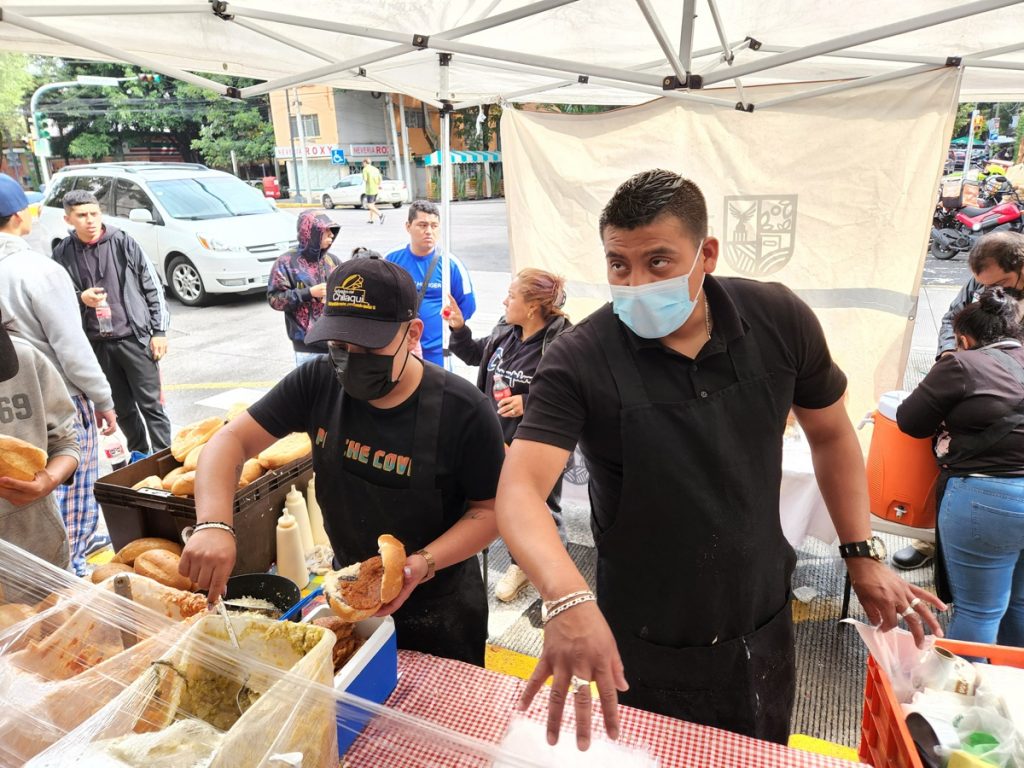
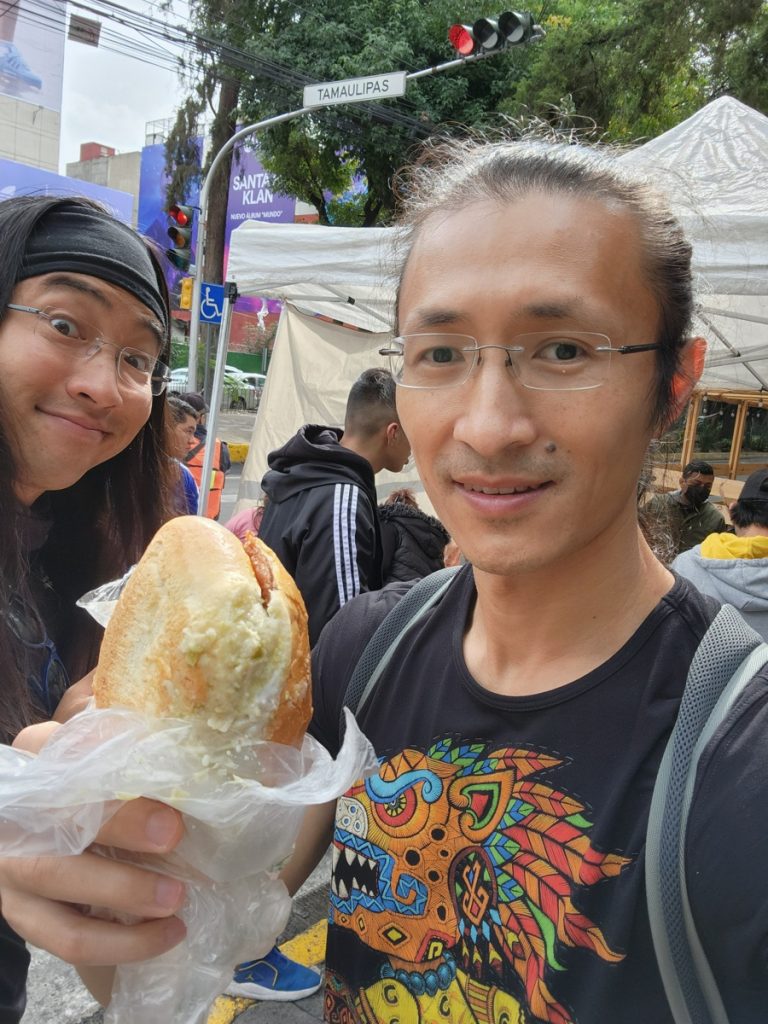
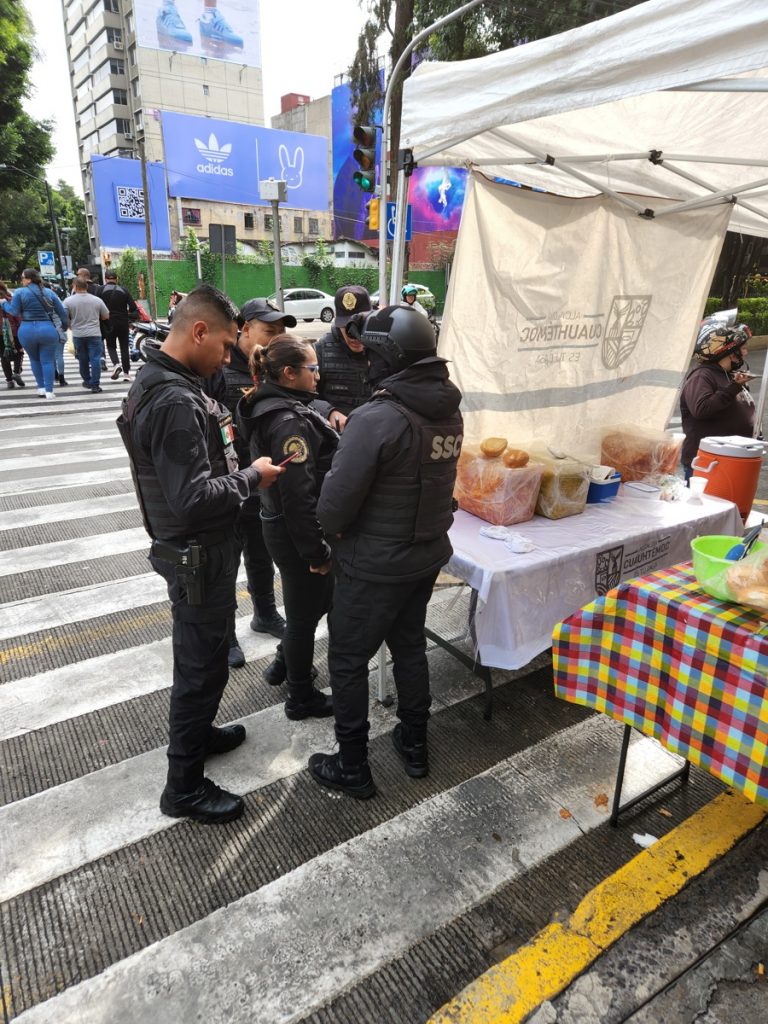
La Condesa & Parque Mexico
After the bready breakfast, we walked diagonally through La Condesa. It was among the few hipster neighborhoods (along with Roma Norte and Polanco) that Millennial travel bloggers raved about as the best part of the city, although except for them being picturesque nobody gave a clear reason or specific destination within them. Walking through, the most obvious feature was its similarity to American cities… with bars, cafes, sushi restaurants, and signs in English rather than Spanish. I’d later learn about the gentrification problems in these neighborhoods, where American remote workers relocated here and displaced local residents.
Parque Mexico was a beautiful city park full of green foliage. It also had two dog parks, segregated by dog size. Speaking of which, we had been seeing a lot of dogs on this trip, and most of them were off leash. It wasn’t clear how many were wild or strays, but the sense I got was that most of them were pets allowed to roam free. All of them had great social etiquette, though, sharing the public space with humans in harmony. We didn’t witness any dog approaching any person begging for food, clawing their pants, or licking their hands. We didn’t even hear any barking, except for a short yelp from a dog accidentally stepped on. We scratched our heads that these Mexican dogs were more civil than their canine (and human children) neighbors to the north.
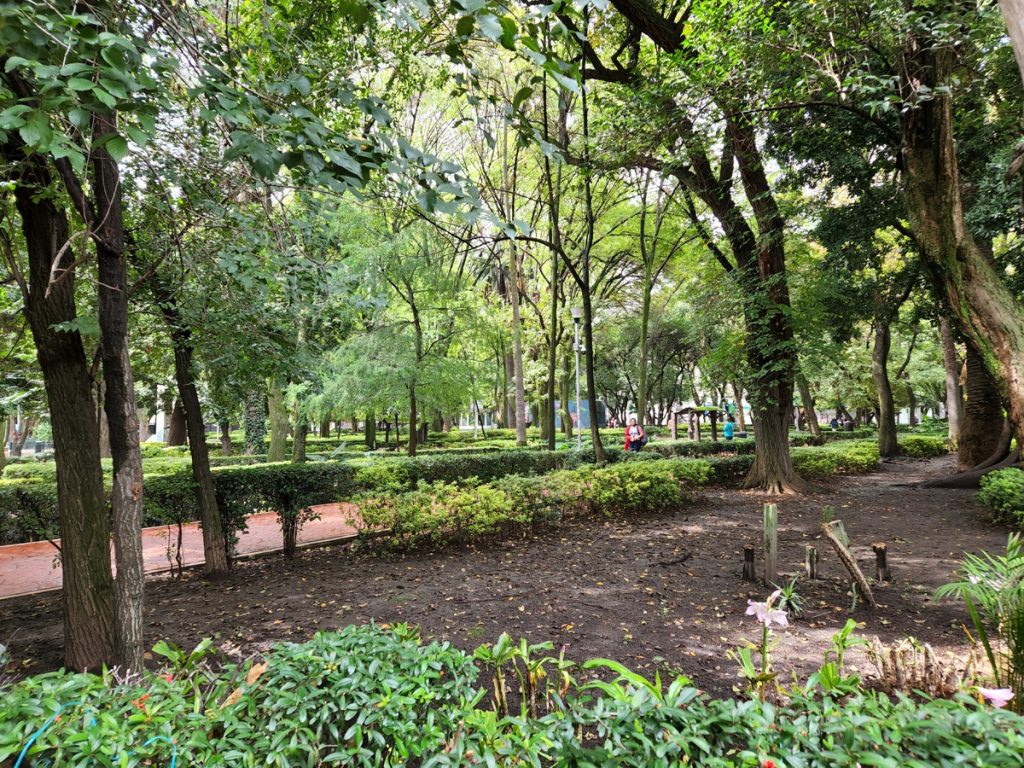
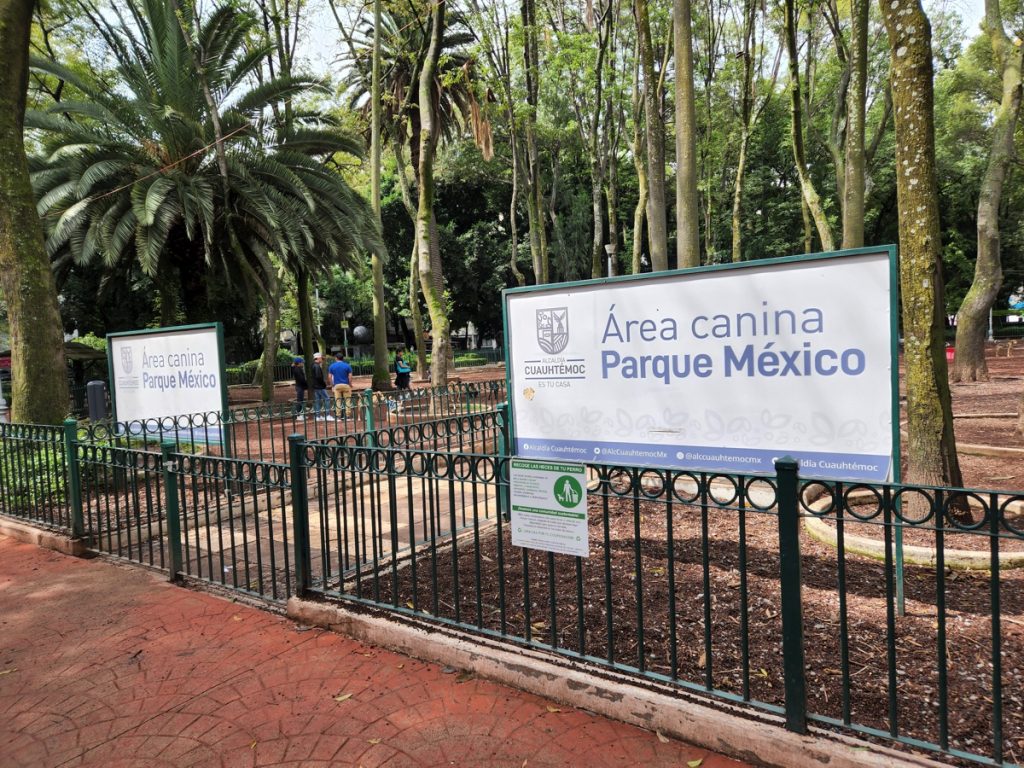

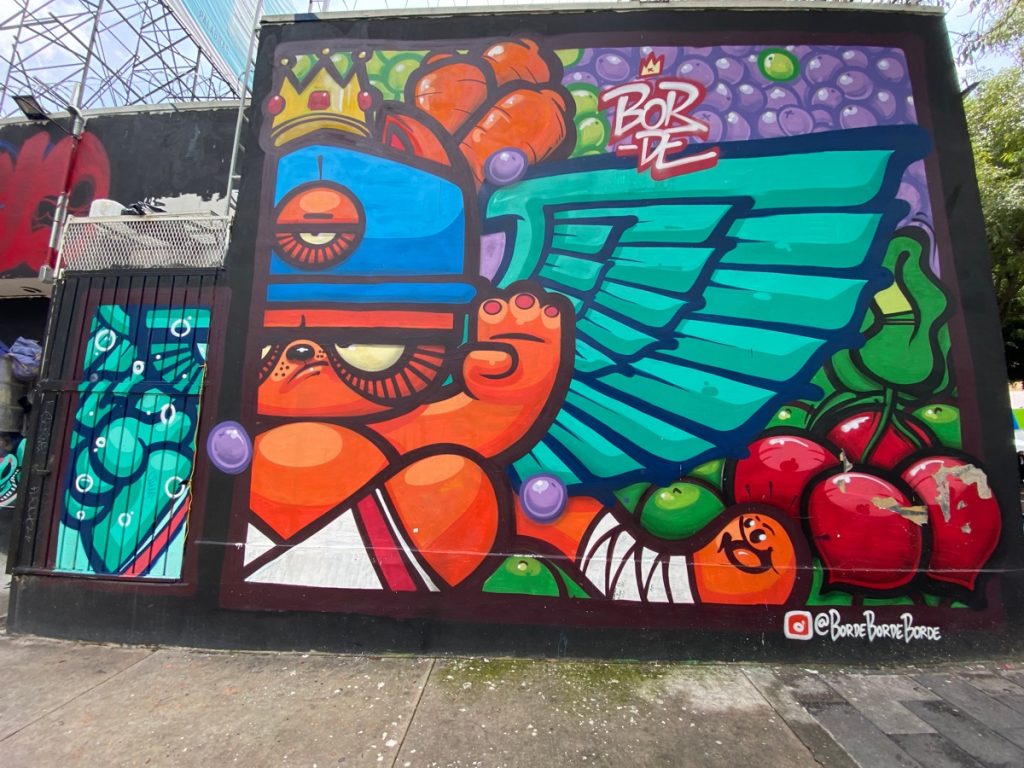
Churreria El Moro
Within two months from visiting Spain, I arrived in the heart of (what used to be) New Spain. These two places seemed so different from the American perspective, but their core identities had a lot in common. Both Andalucia and Mexico used to be ruled by brown-skinned people who weren’t big on Virgin Mary. Then, the fall of Granada was immediately followed by the voyage of Christopher Columbus, which led to Hernan Cortes ruthlessly annilating Tenochtitlan shortly after. 501 years later, people in both places speak Spanish, pray at Catholic churches, and… eat churros.
An independently-developed bucket list item on both of these trips was to eat churros dipped in chocolate. My family got nearly addicted to this stuff in Andalucia, so a trip to CDMX wouldn’t be complete without visiting El Moro, the most famous churreria around here. This breakfast dessert was an example of cultural exchange and integration: the Spanish brought the churro recipe here, and took drinking chocolate from the Mexica people. Now both people loved both!
Verdict? El Moro was lovely, and its food top notch. But I preferred the Andalucian styled puffy churros (the kind resembling Chinese youtiao) and didn’t love the cinnamon sugar used in Mexico. So Spain won this one.
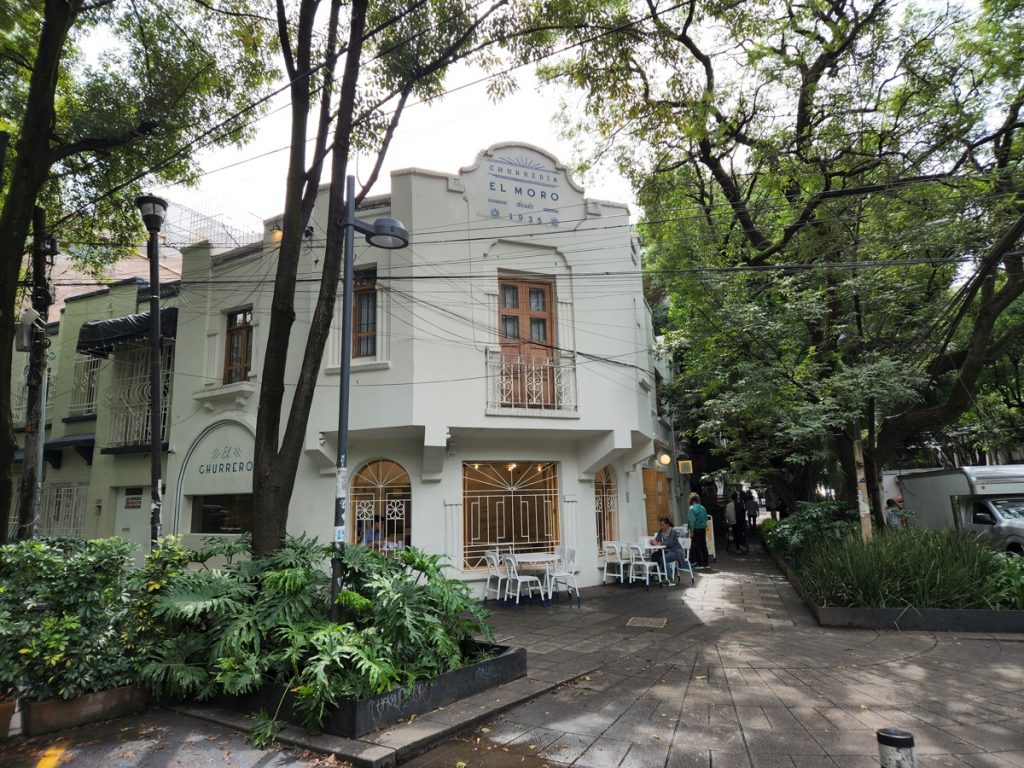
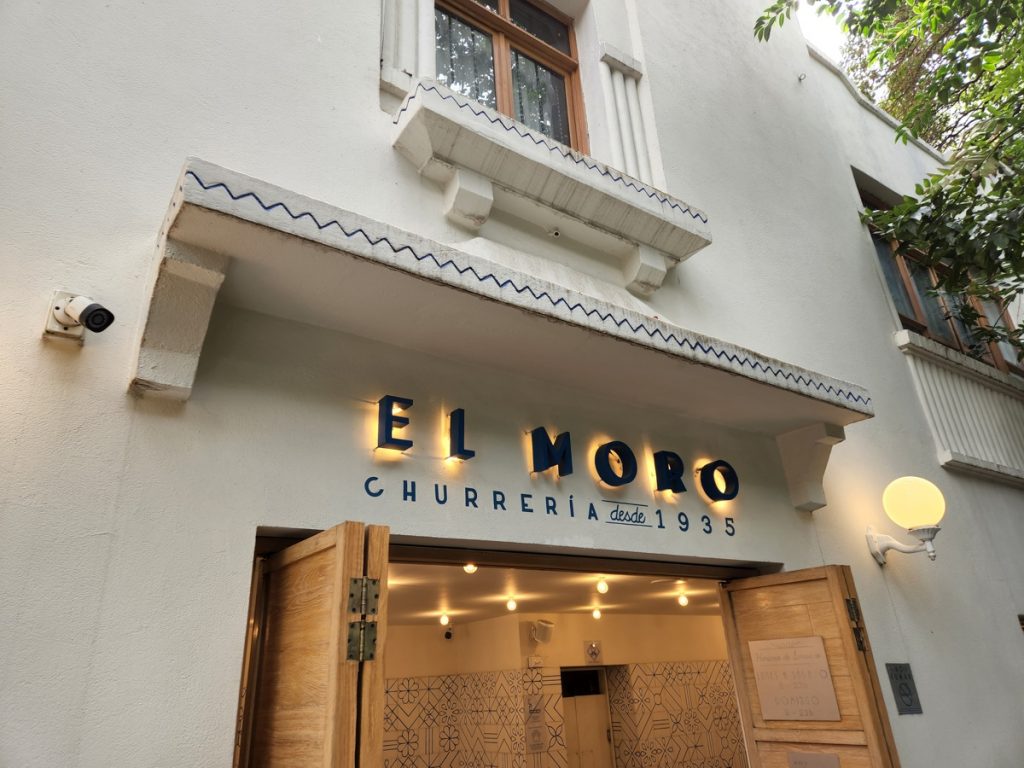
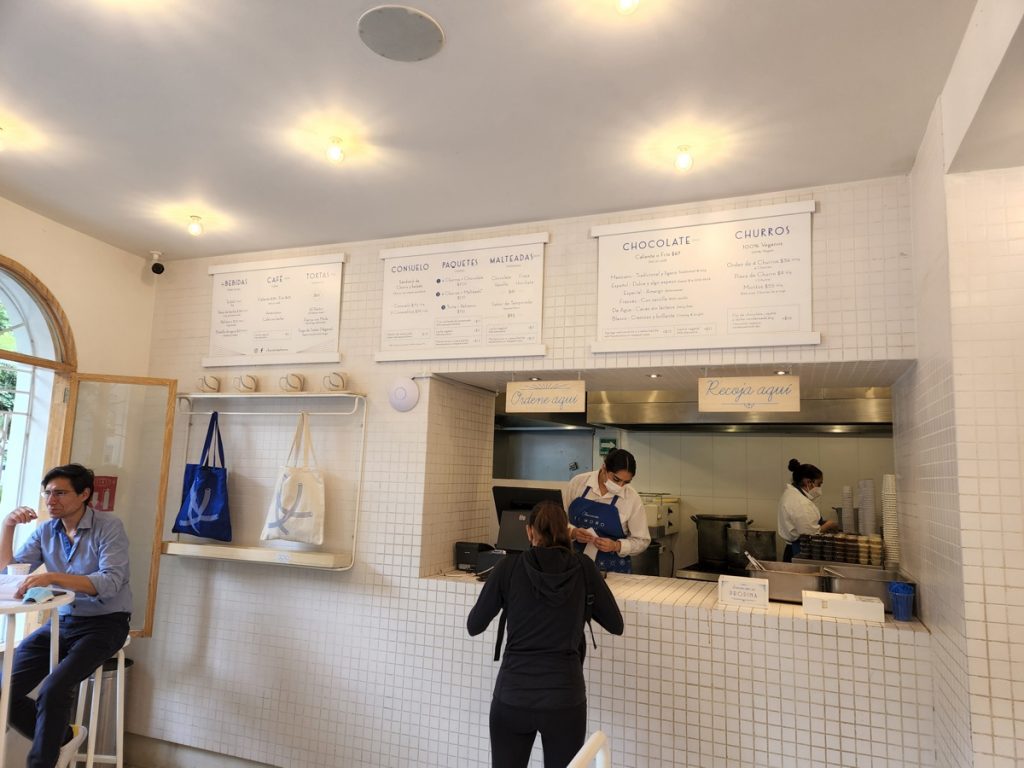


Public Transit
After churros, we were to head back east to La Merced. The day’s itinerary was planned out so we could hop on a subway train here and, without needing to transfer, get a straight shot to our destination.
Now is my chance to say this: we used Uber quite a bit on this trip, but I really enjoyed riding the subway in CDMX. The system was comprehensive. The stations including transfer routes were easy to navigate. And it was cheap: 5 pesos (~$0.25 USD) per ride. The tunnels, platforms, and train interior all gave me nostalgic NYC vibes, but it was much cleaner here than in the Big Apple.
Oh and we didn’t realize this until our 3rd ride or so… but it appeared that every subway station in CDMX had its own icon. For historic places, it’d be a picture reflecting the namesake (e.g. a grasshopper for Chapultepec, a coyote for Coyoacan). For stations named after historic figures, it’d be a silhouette of the person. There are also symbols of hospital, ship, trees, etc. corresponding to other station names. Moreover, the background color of each icon would reflect the color of the subway line, and dual colors were used for transfer stations. I had never seen anything like it! It was both adorable and user-friendly, adding an artistic touch while making it easy to read the subway system map.
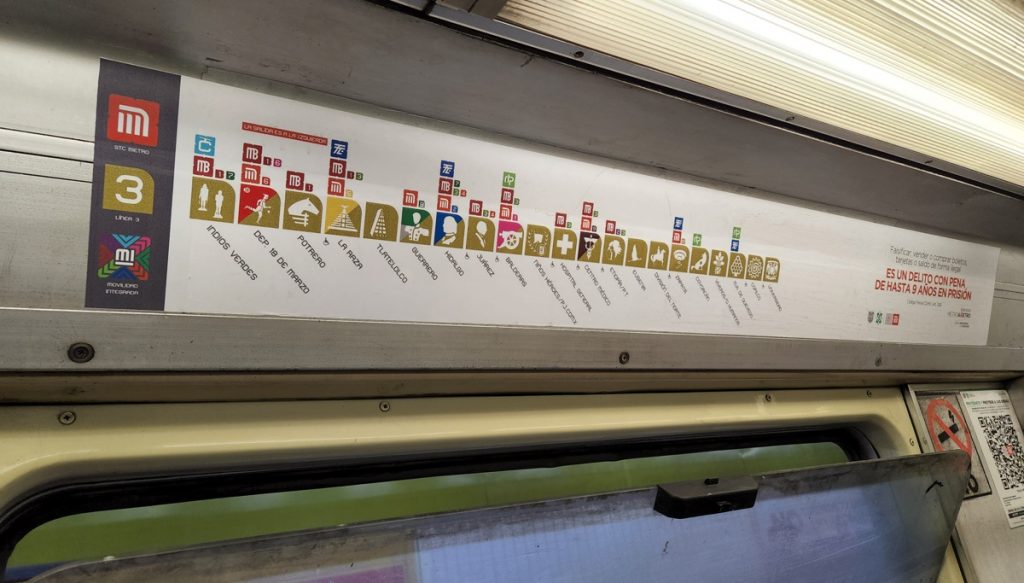
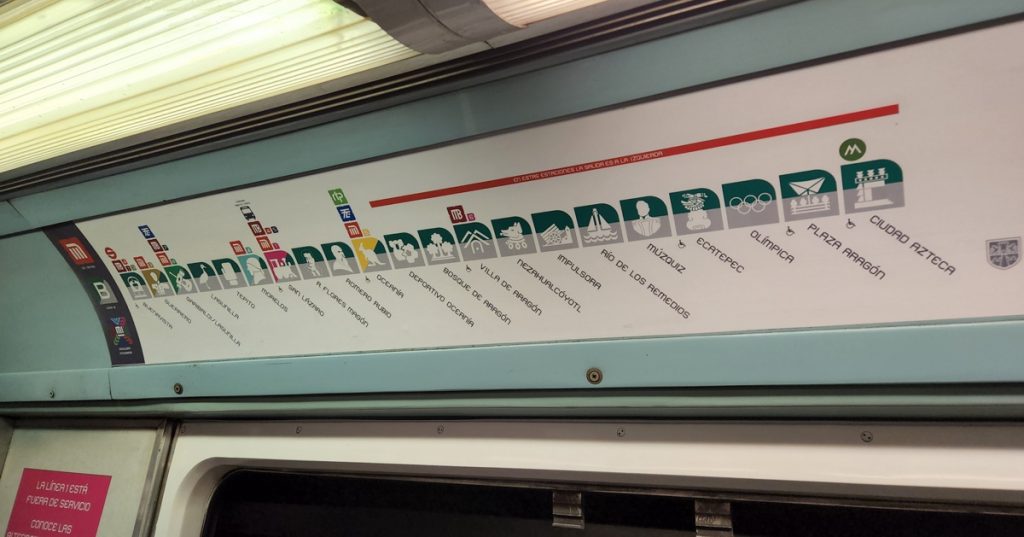

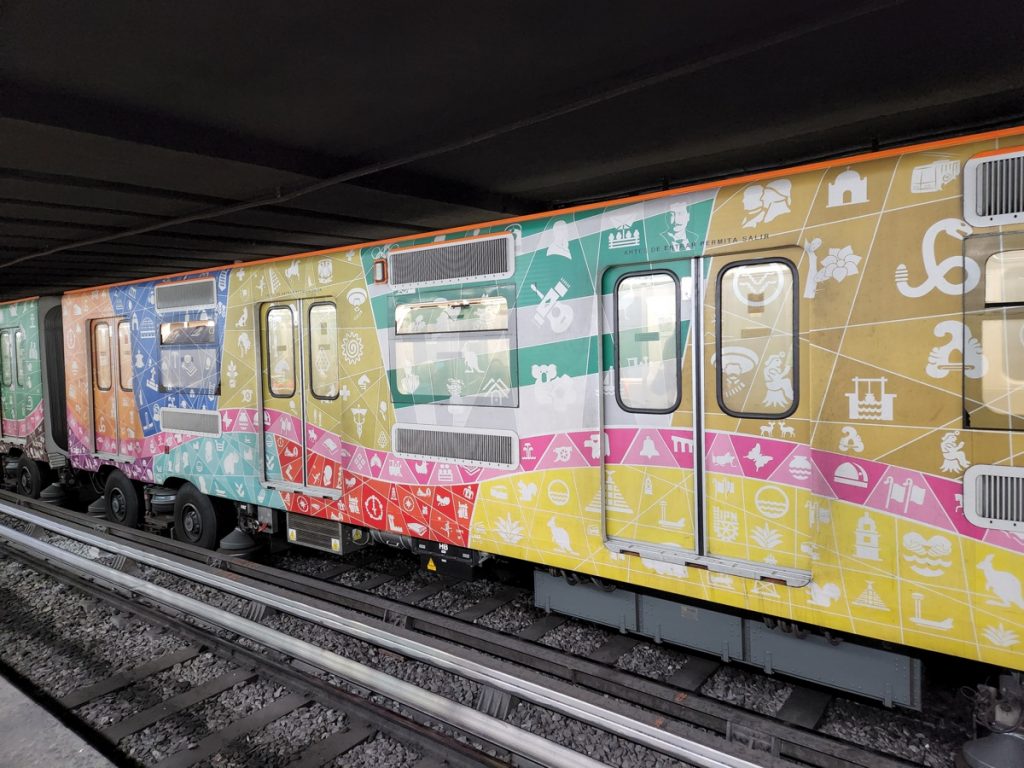
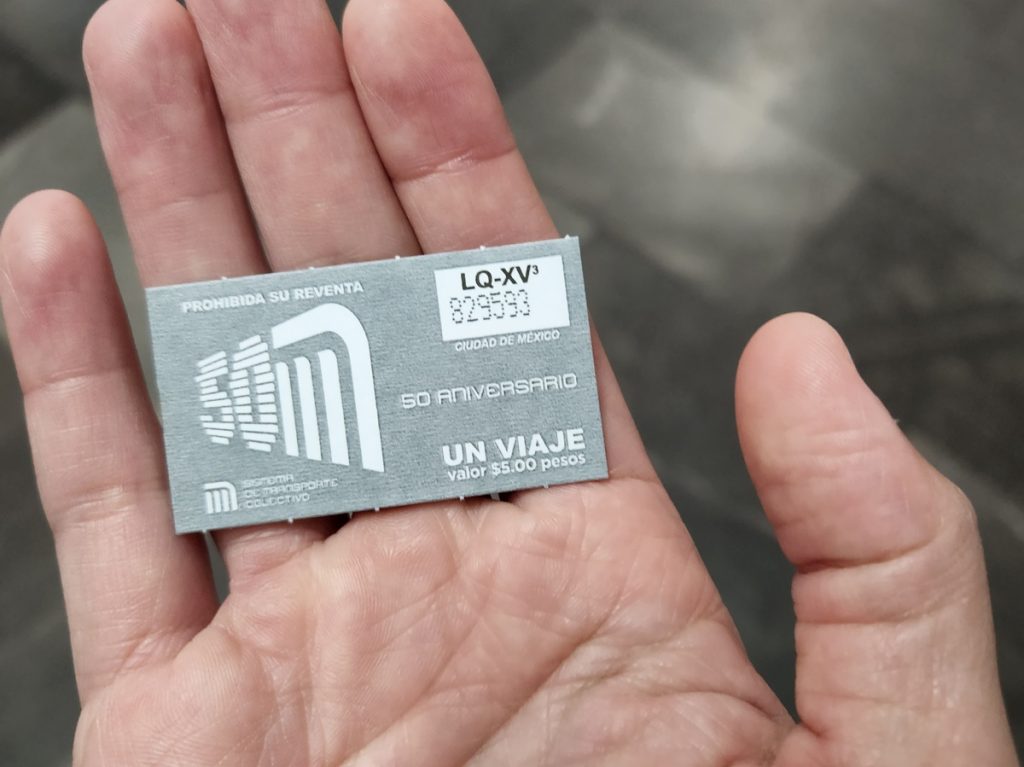
Half way into our “straightforward” subway ride, everyone got off the train. We naively celebrated having more room to ourselves for a couple seconds before someone yelled at us to get off. We jumped off and the train went back toward where we came from. Eh, some sort of service interruption? We had no clue what was going on, but experience from years of riding public transit would say it was unimportant. Let’s focus on finding an alternative to continue our journey.
Some PSA in the station mentioned there being shuttle bus available, which is what I’d expect from any respectable transit agency. However, my experience with such stop-gap services was never great, so I begrudgingly prepared to summon another Uber for the second half of the journey.
As soon as we ascended to the street level, and before we could locate a street corner suitable for car service, we saw the masses being herded orderly into bus lines. An entire street block had been sectioned off for the shuttle service, and buses arrived and departed continuously. Semi-makeshift signs labeled the three bus routes (local vs. express with different stops) quite clearly, and uniformed staff made sure people understood where to go and managed the lines to avoid overcrowding on each bus. It was the kind of organization that you see in Disney World and nowhere else in America… our frustration with the service disruption quickly turned into respect and admiration for the transit system’s adaptability. The rest of our trip was completed in that comfortable (and free) bus ride, and we were grateful to have that opportunity.
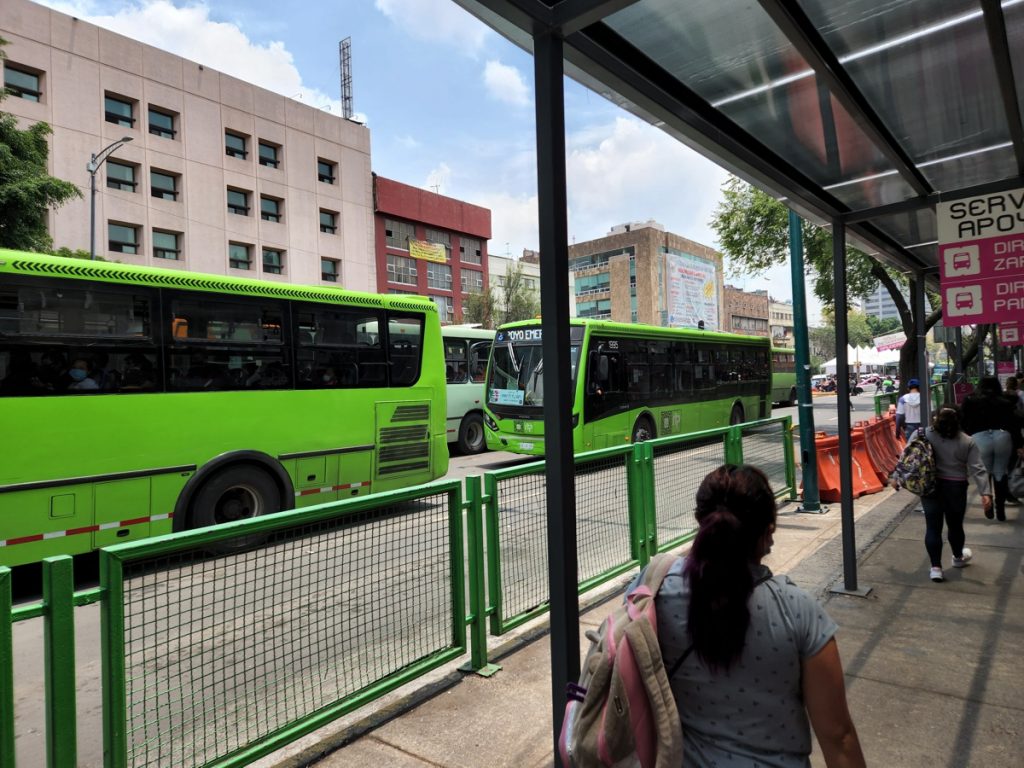

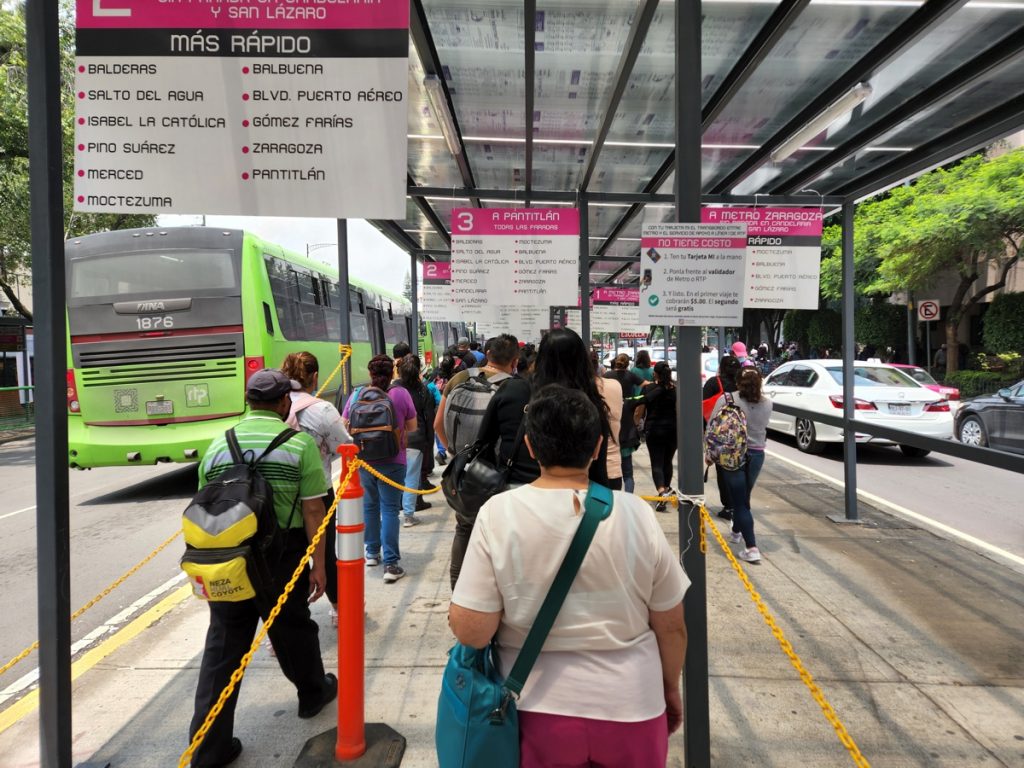
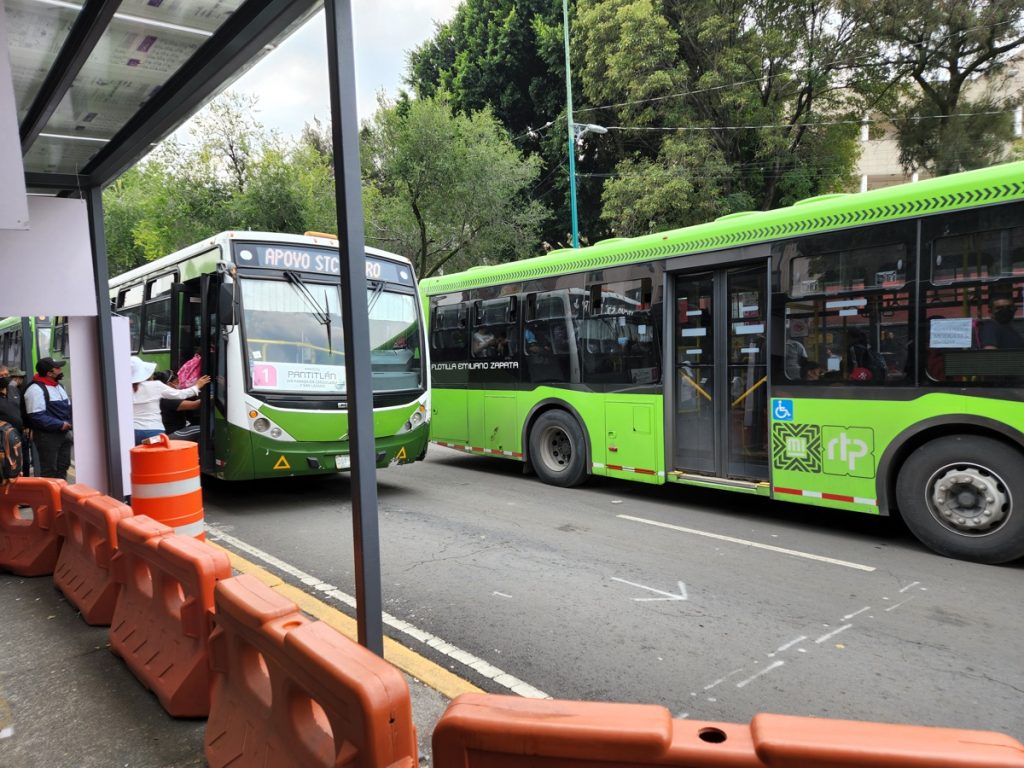
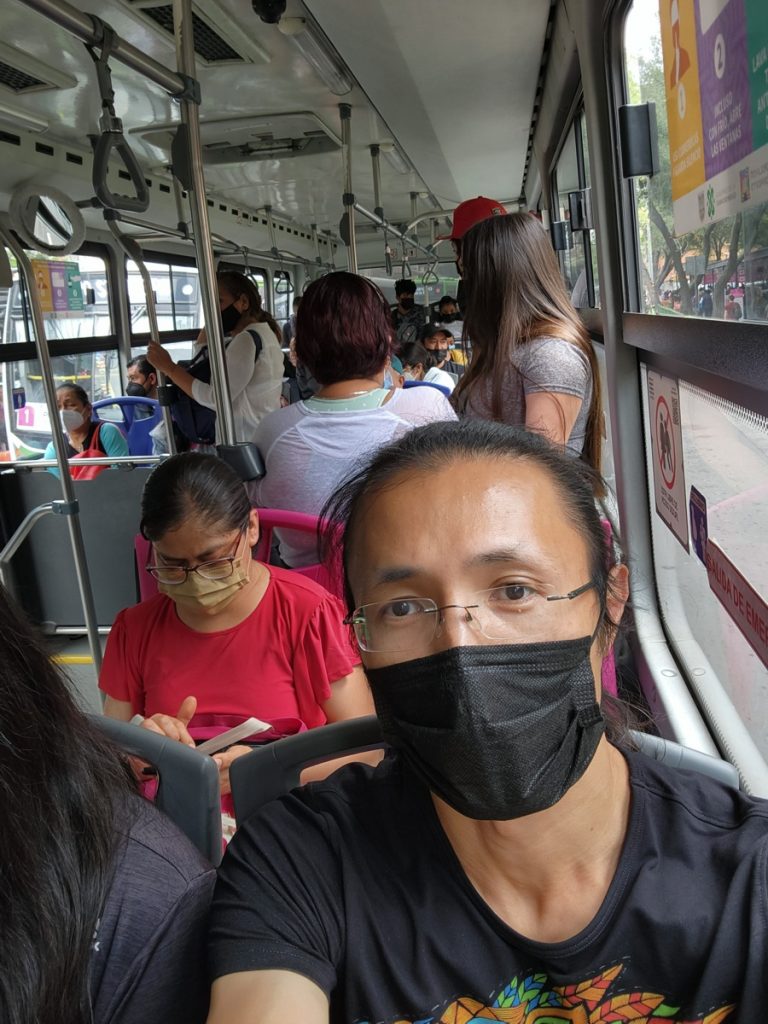
Mercado de la Merced
Jumping off the bus, we headed into La Merced, a market just east of Zocalo. I was under impression from the Internet that La Merced was slightly smaller and more tourist-trappy than the Coyoacan market, but the opposite turned out to be true.
On the map, the physical market took up just a couple street blocks. In reality, indoor and outdoor merchants, stores, street vendors, shopping malls, and a couple other markets that technically went by different names all morphed together into this monstrous shopping experience stretching over a mile from end to end (well, I wasn’t sure if an “end” actually existed). We got slightly lost a couple times and it was awesome. From cheap underwear to freshly slaughtered whole animals to birthday balloons to a full spectrum of lime varieties to giant toilet paper rolls, this market had everything! Ever dreamed of shopping at an onions-and-garlic store? How about having 10 of those to choose from? There had to be more people selling stuff here than there were tourists in the entire city.
Phil and I exercised extraordinary self control with shopping, and left the market with only a backpack full of t-shirts and a kilo of yellow guava.
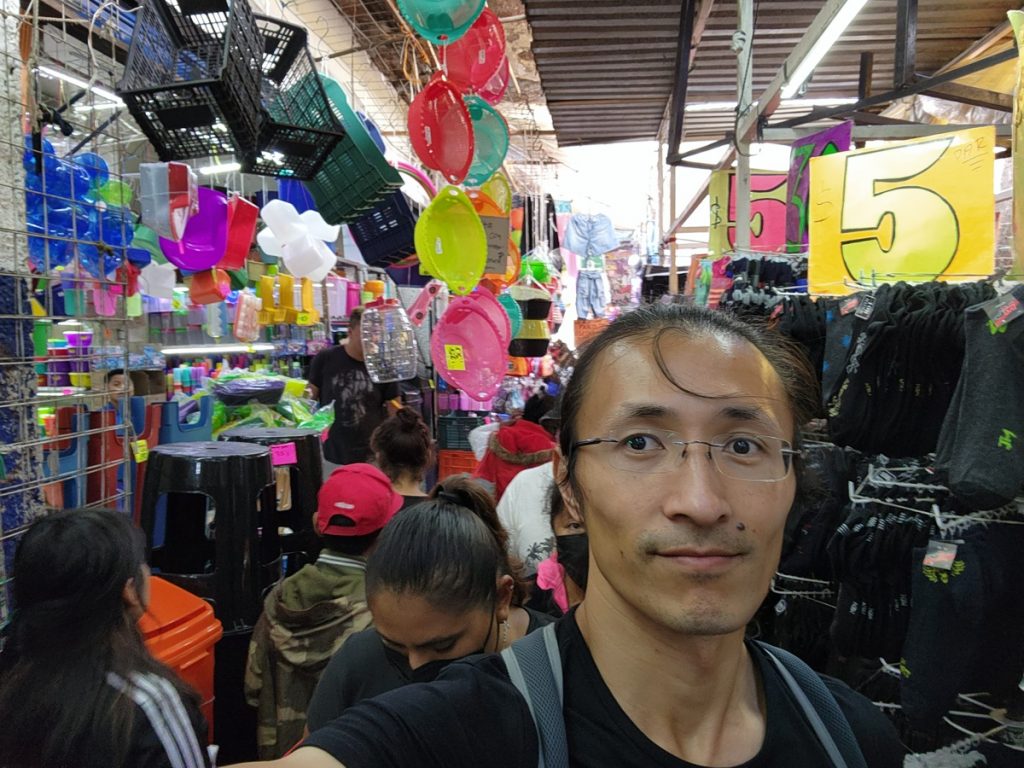
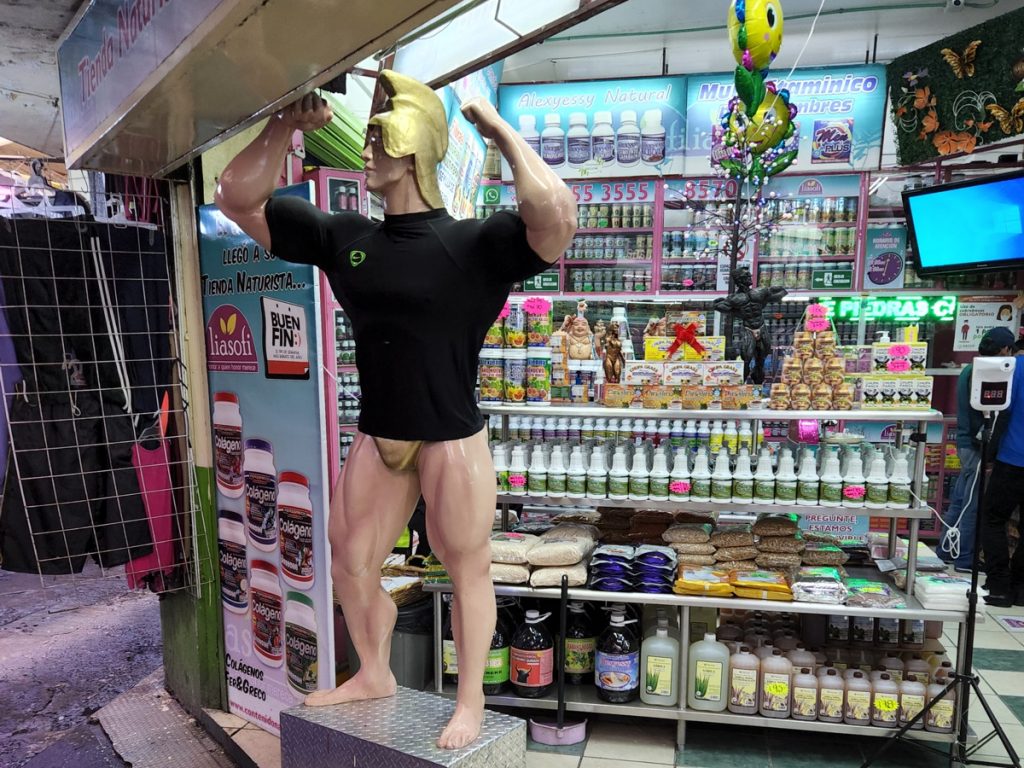
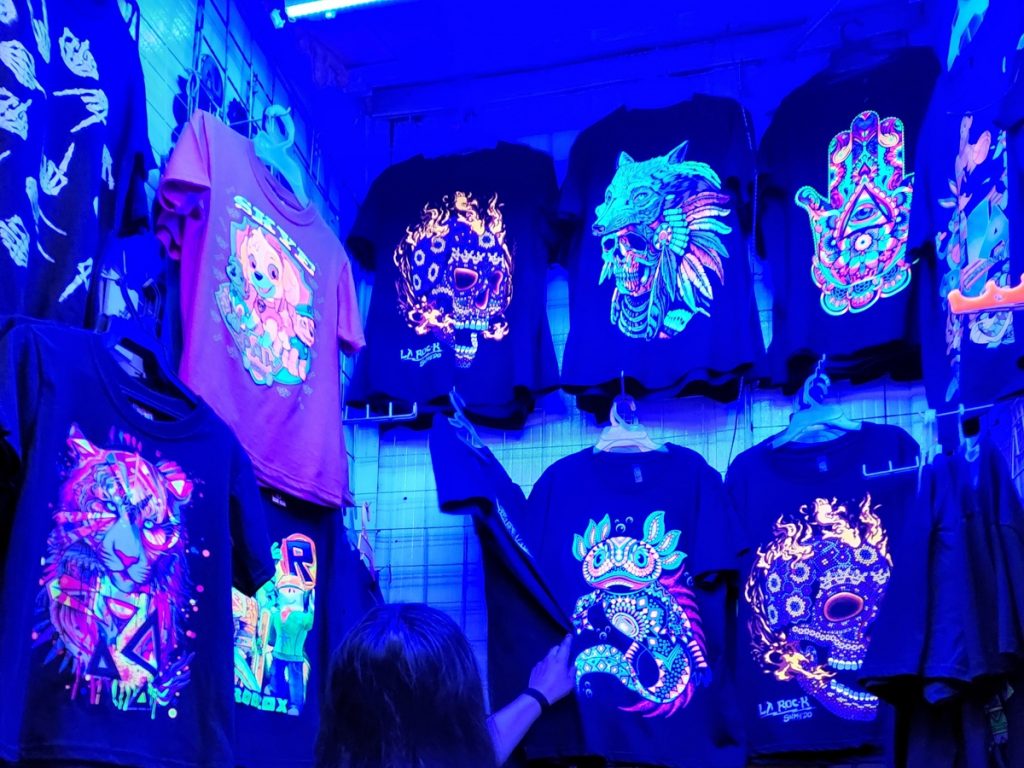
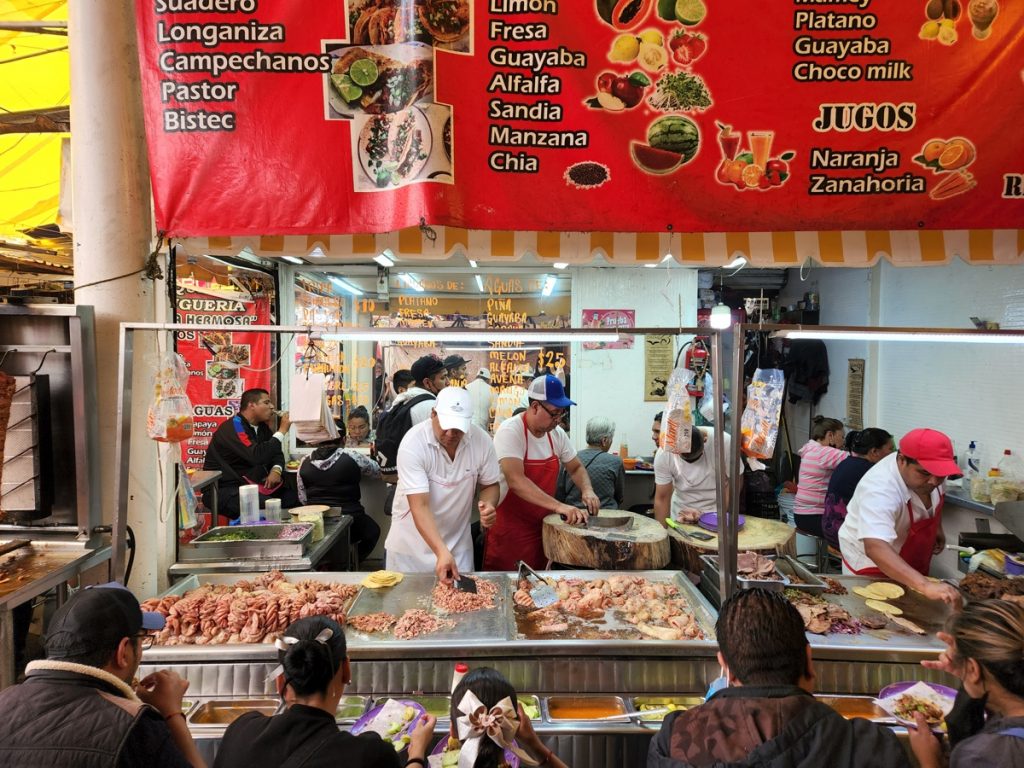
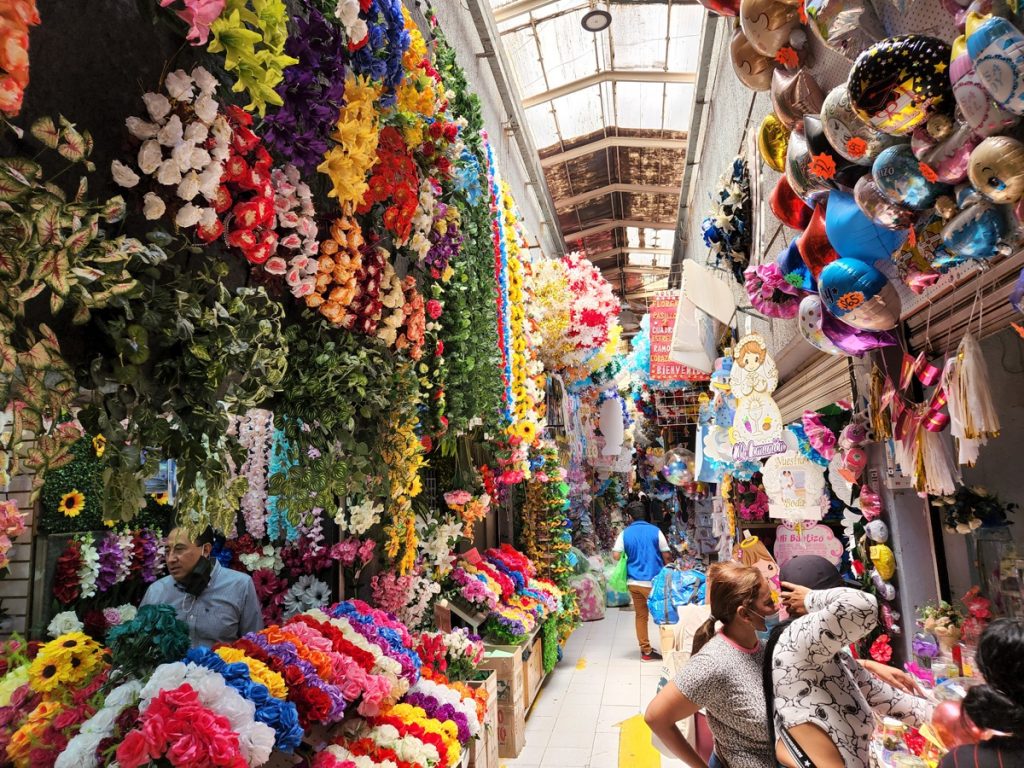
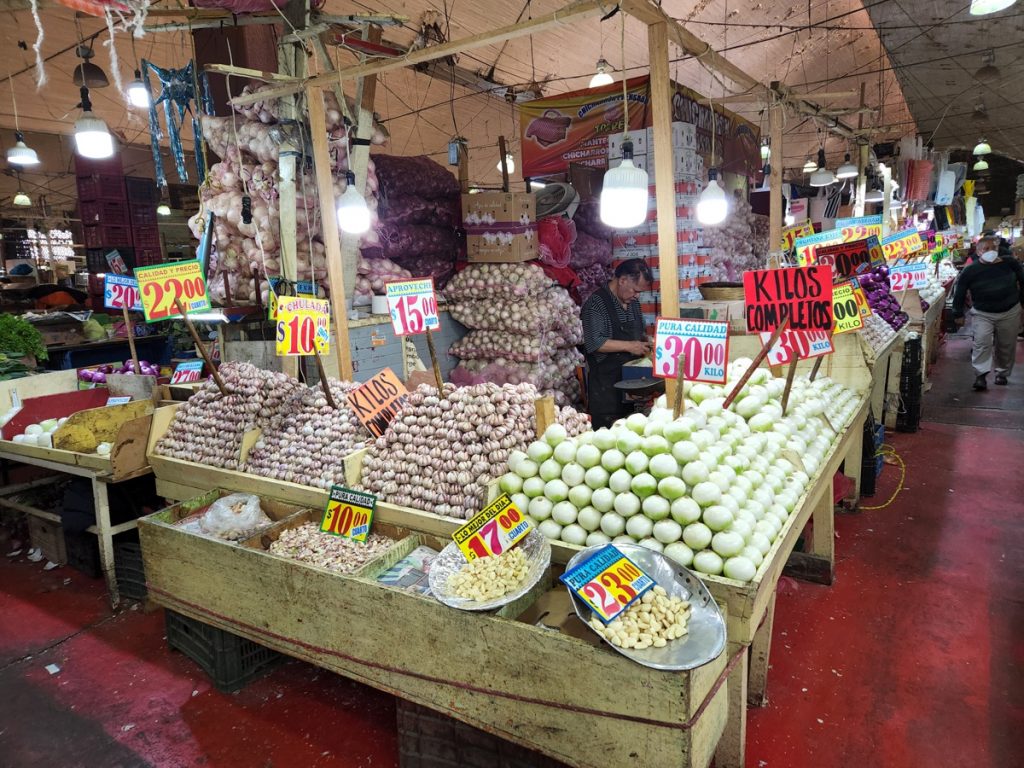
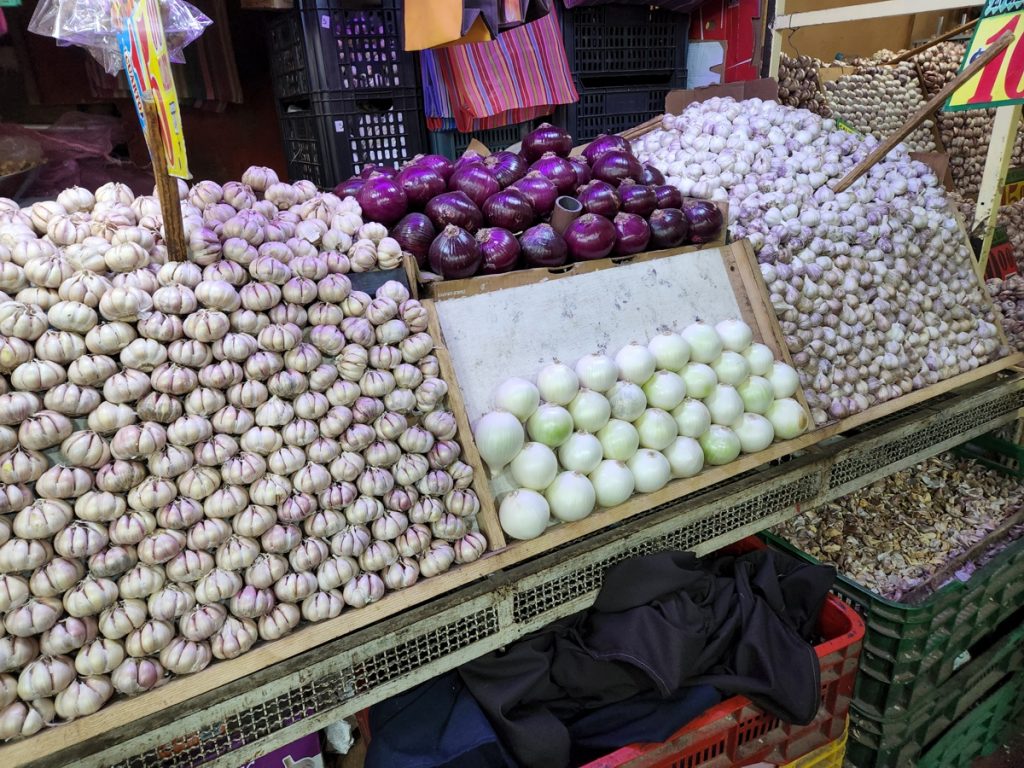

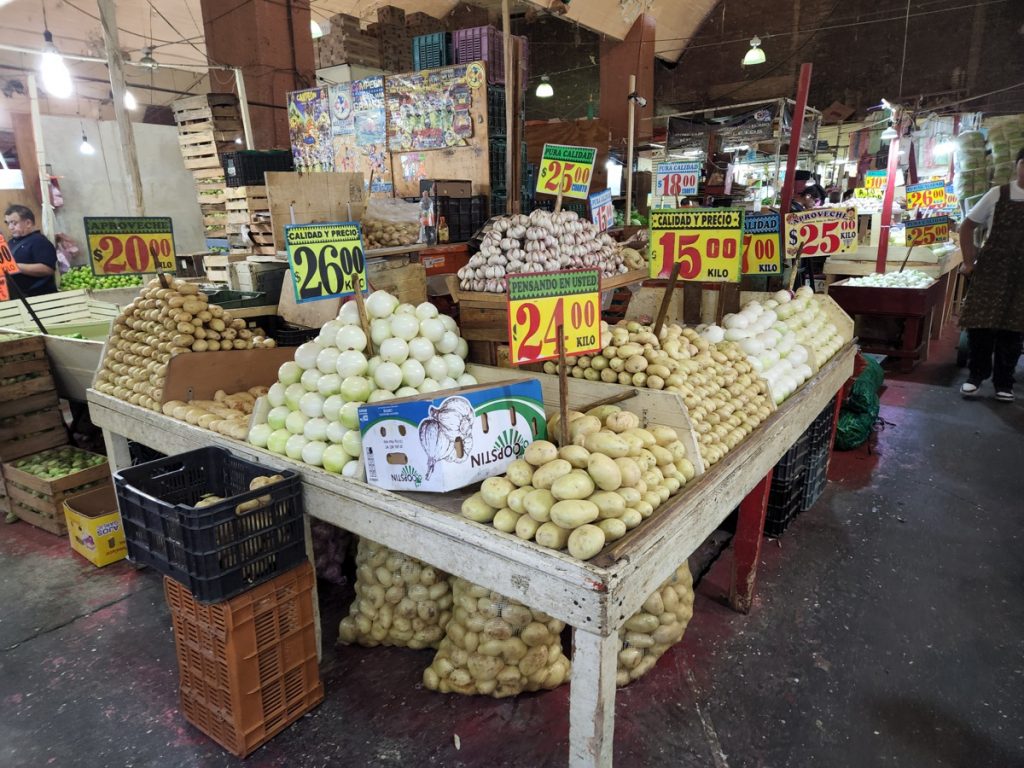
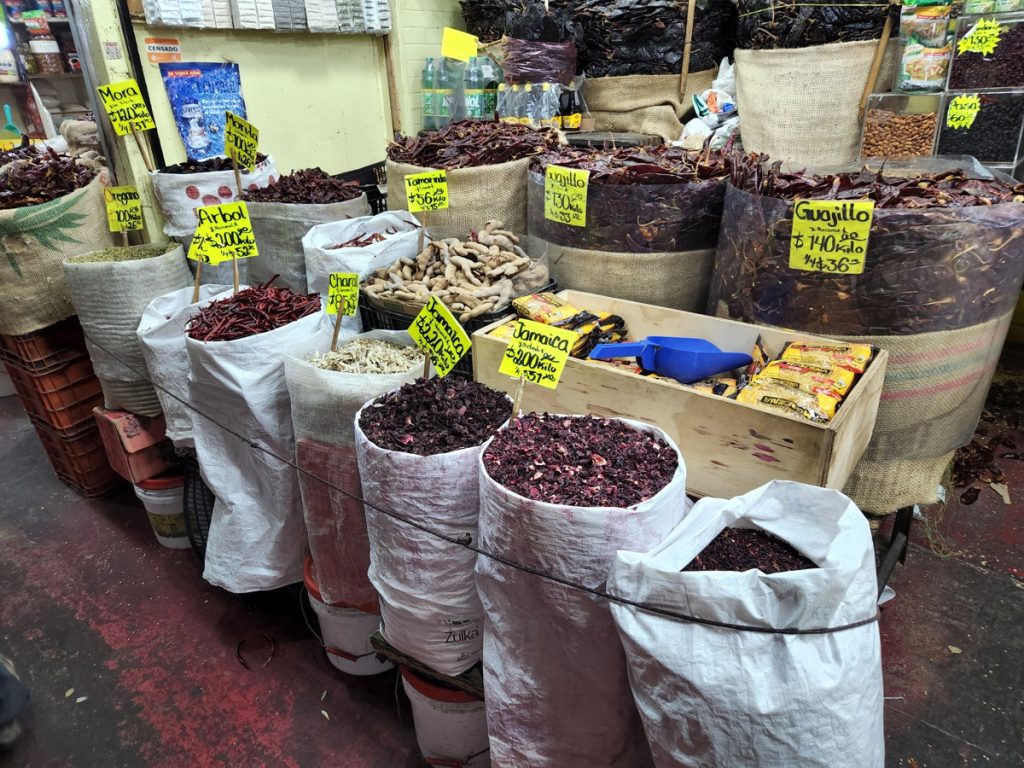
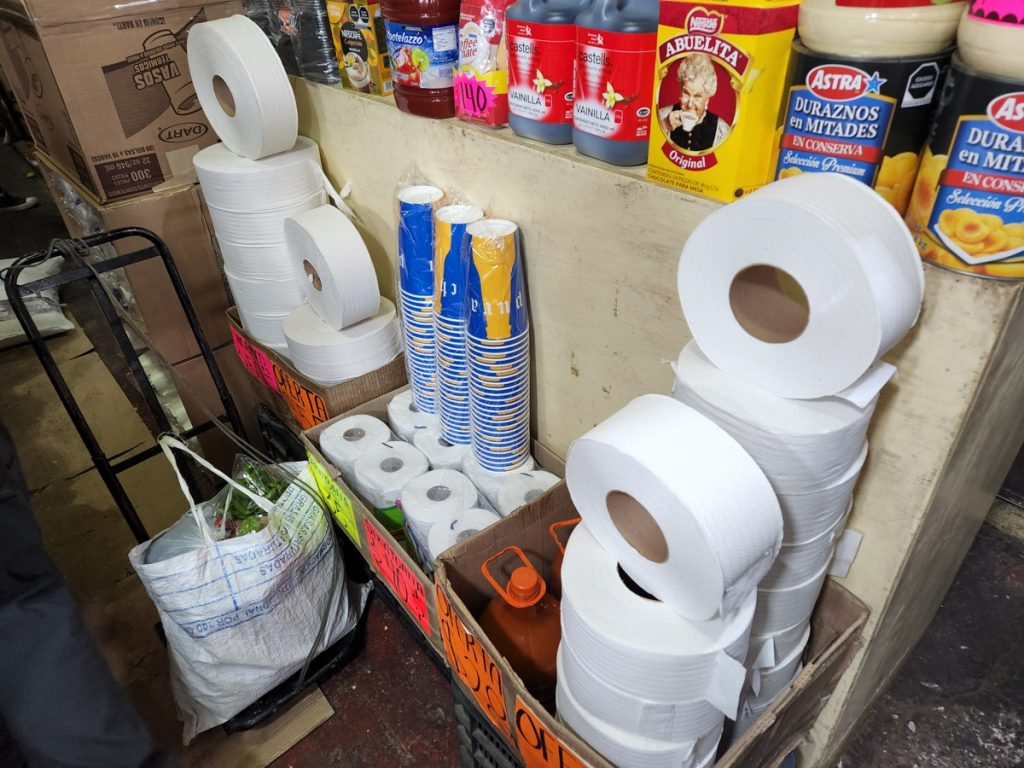
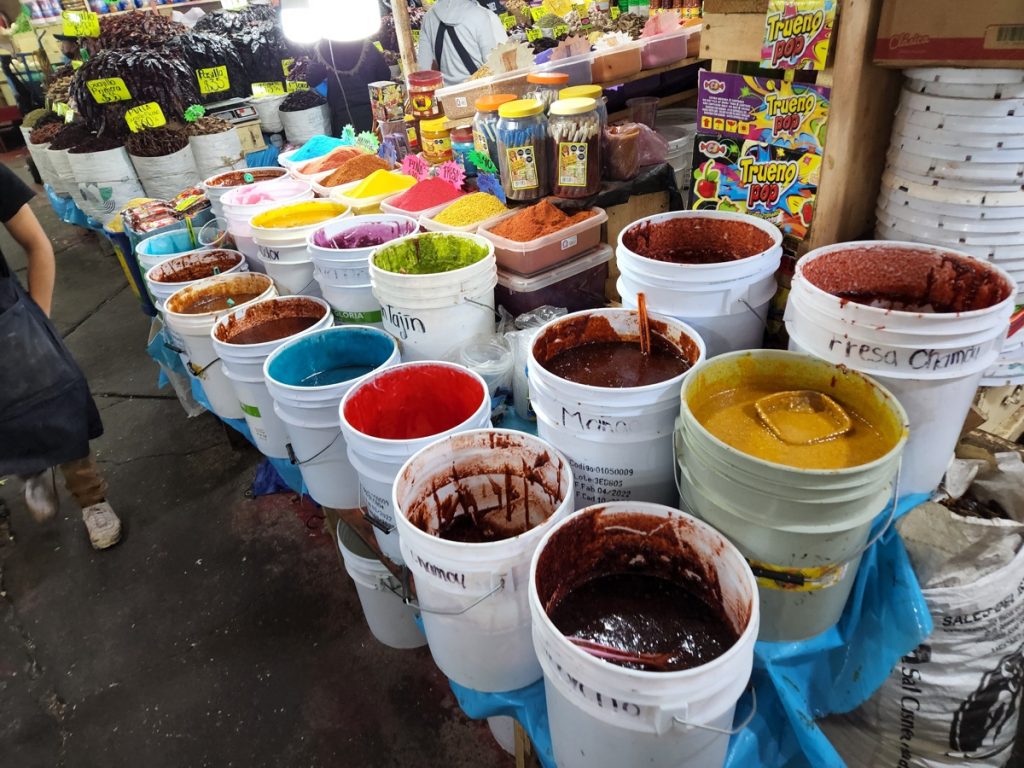
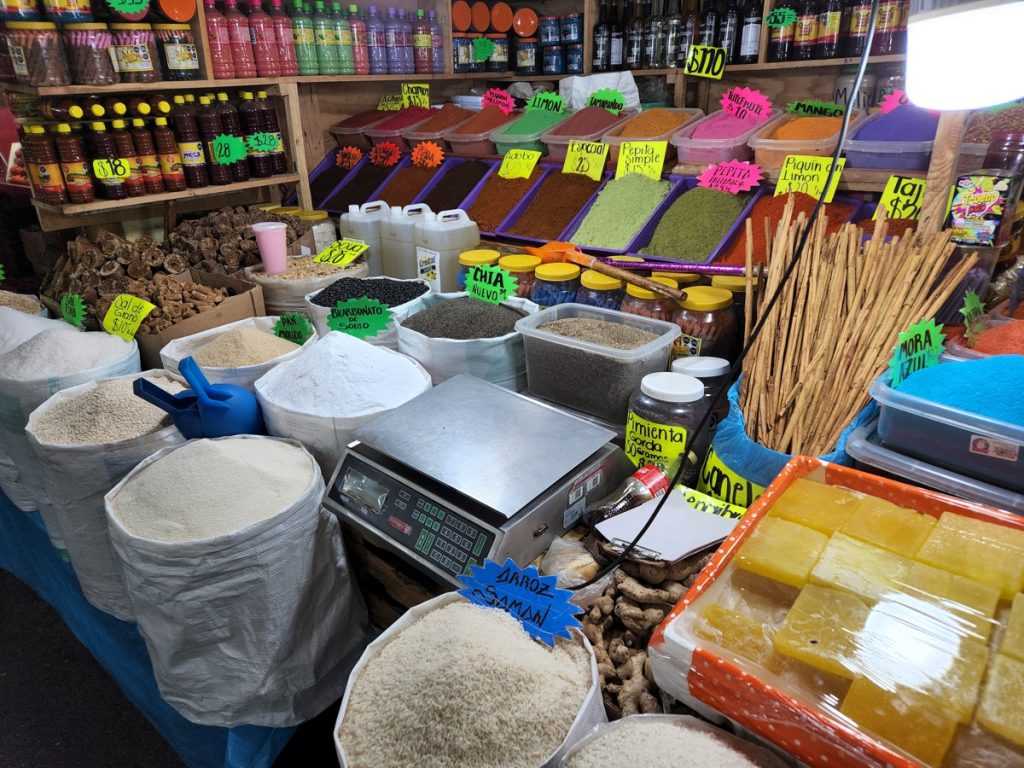
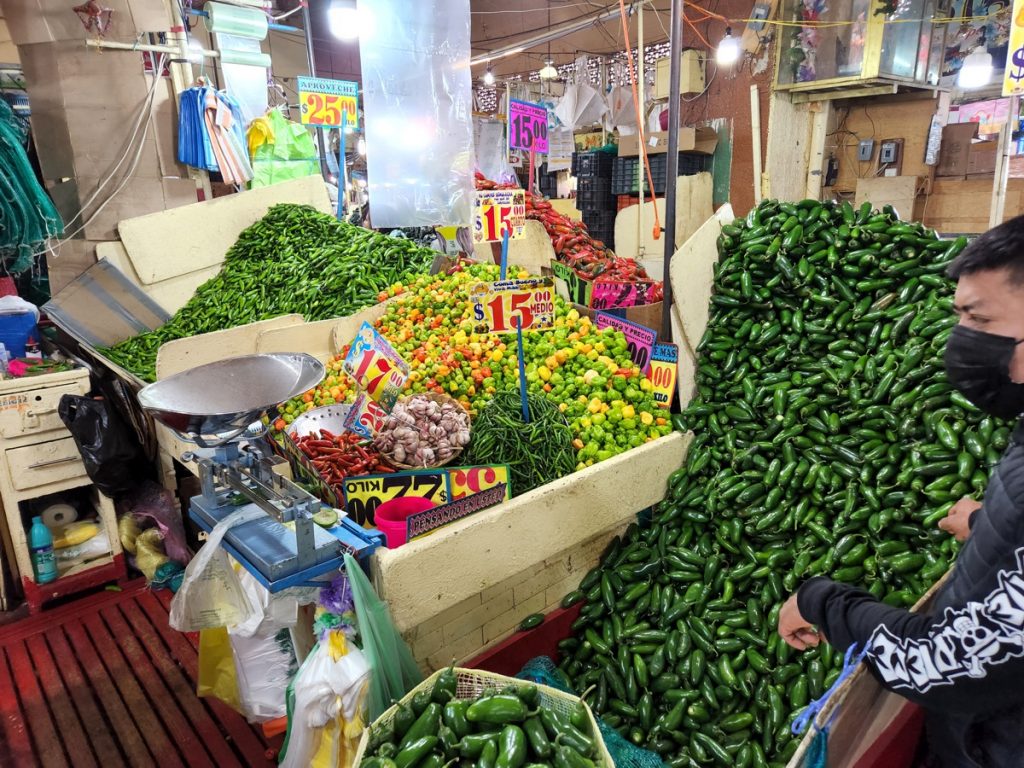
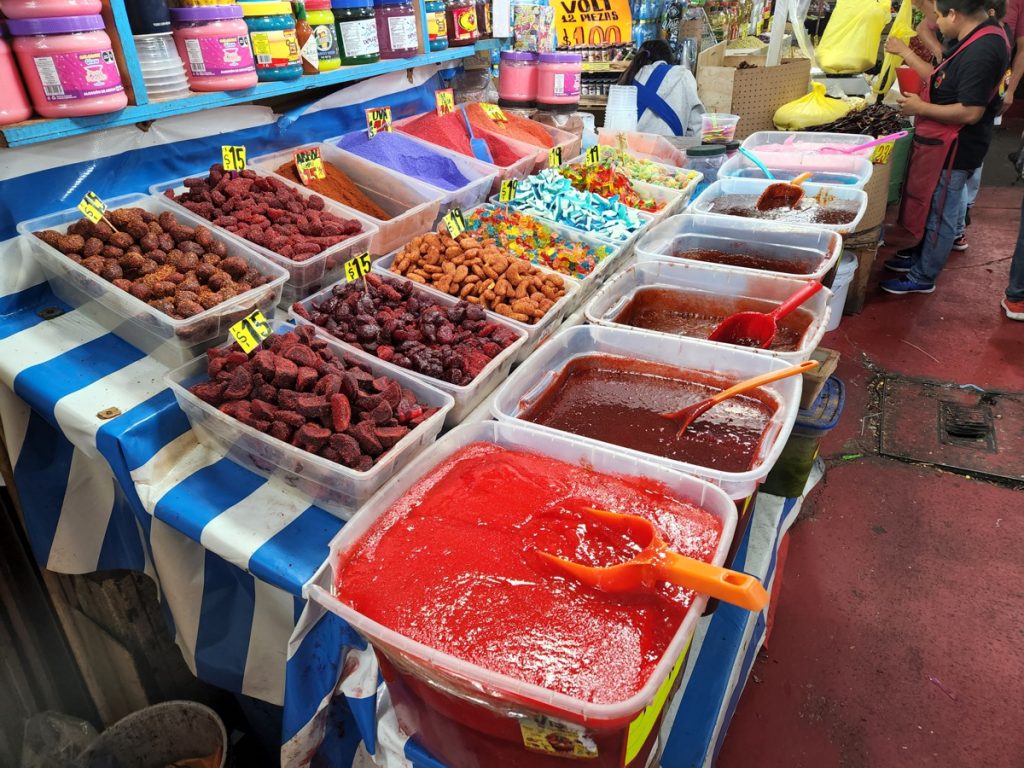
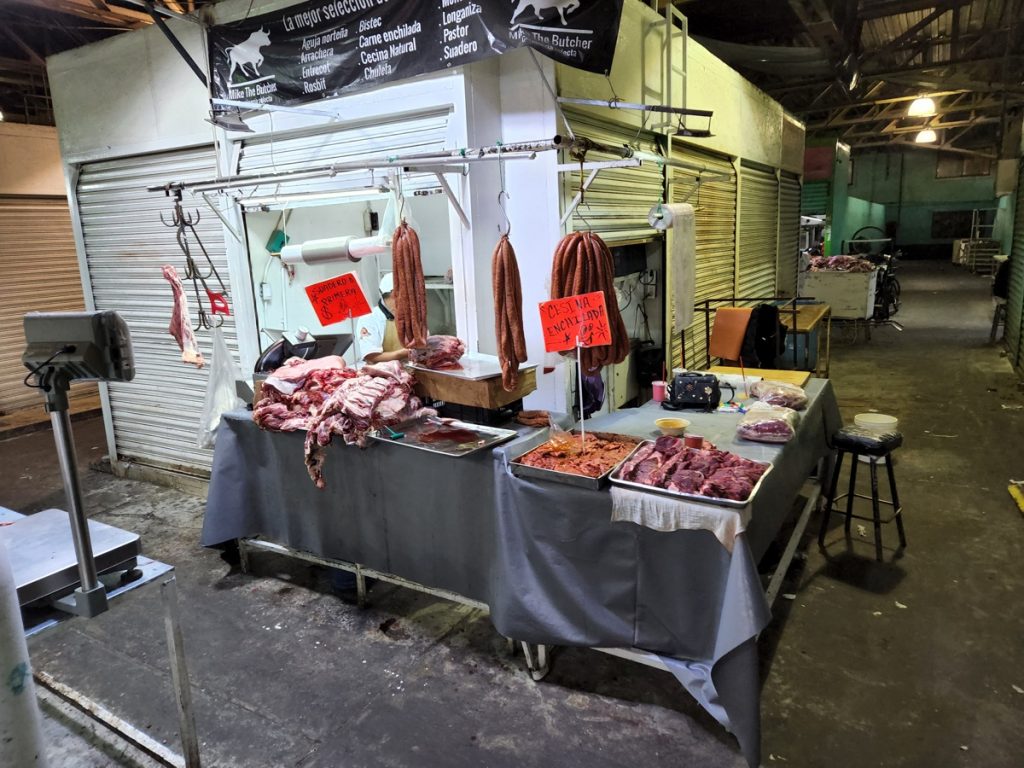
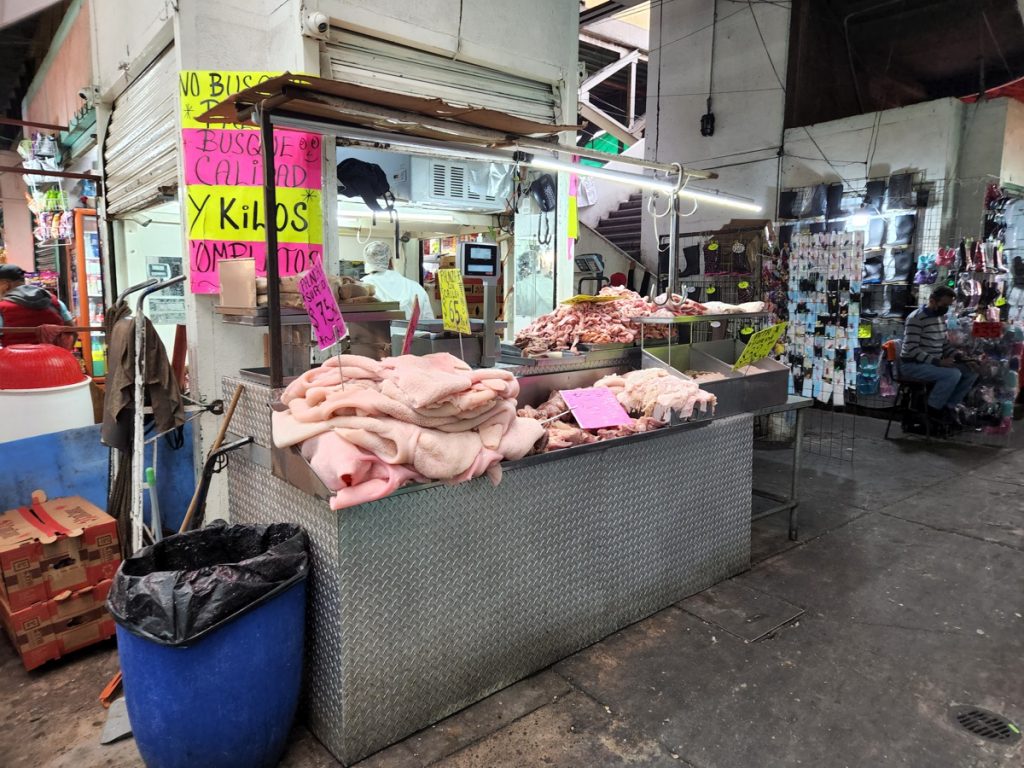
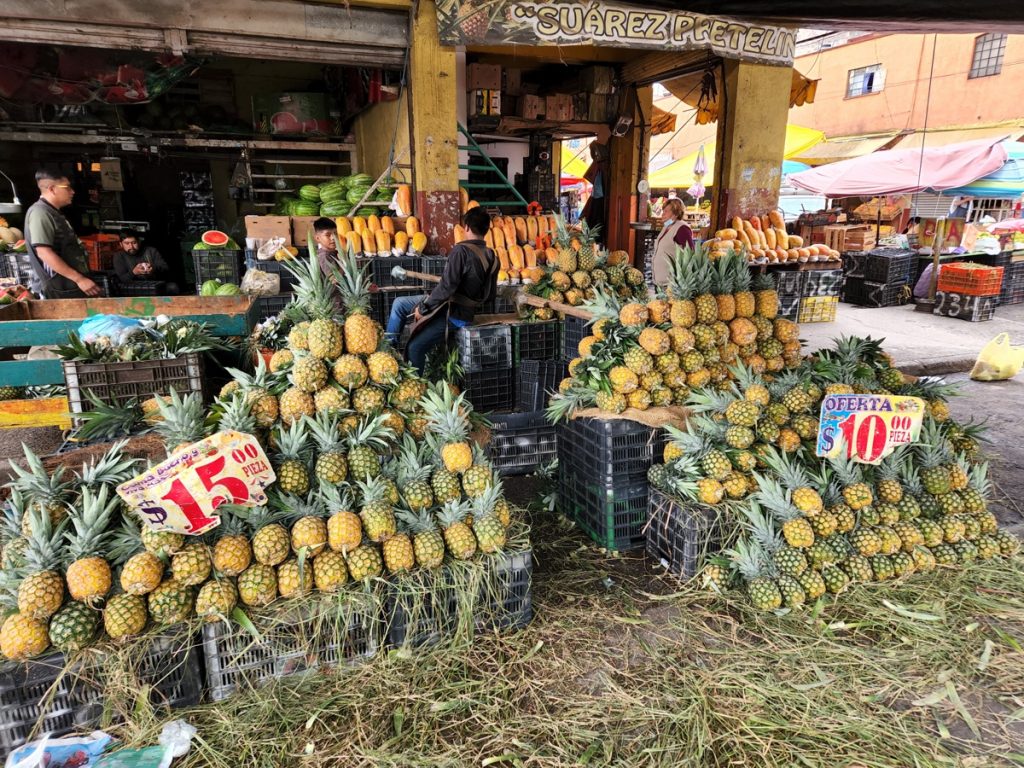
Zocalo
At the end of the market sprawl, we arrived at the center of CDMX – Zocalo. There was a lot of stuff surrounding the square.
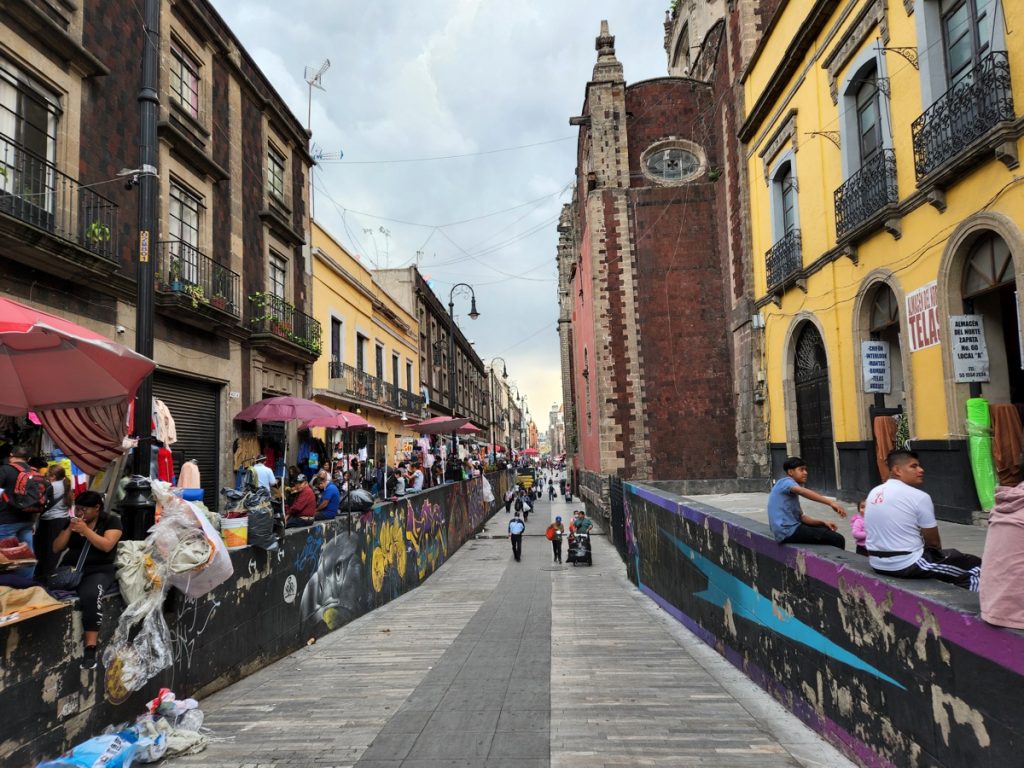
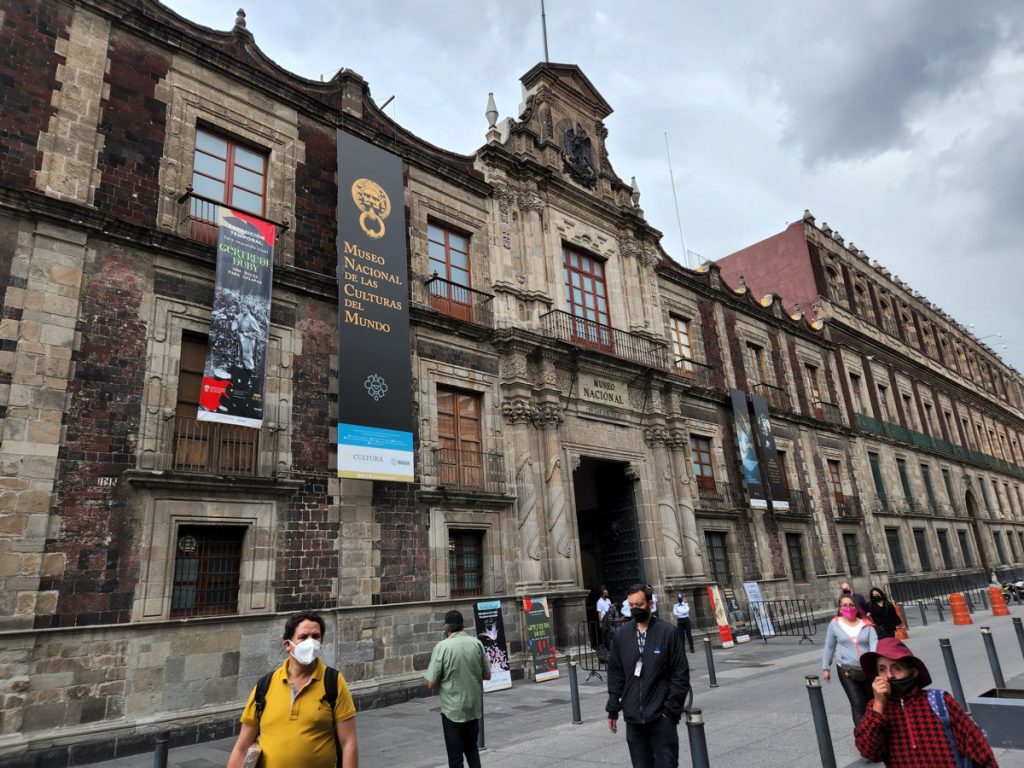
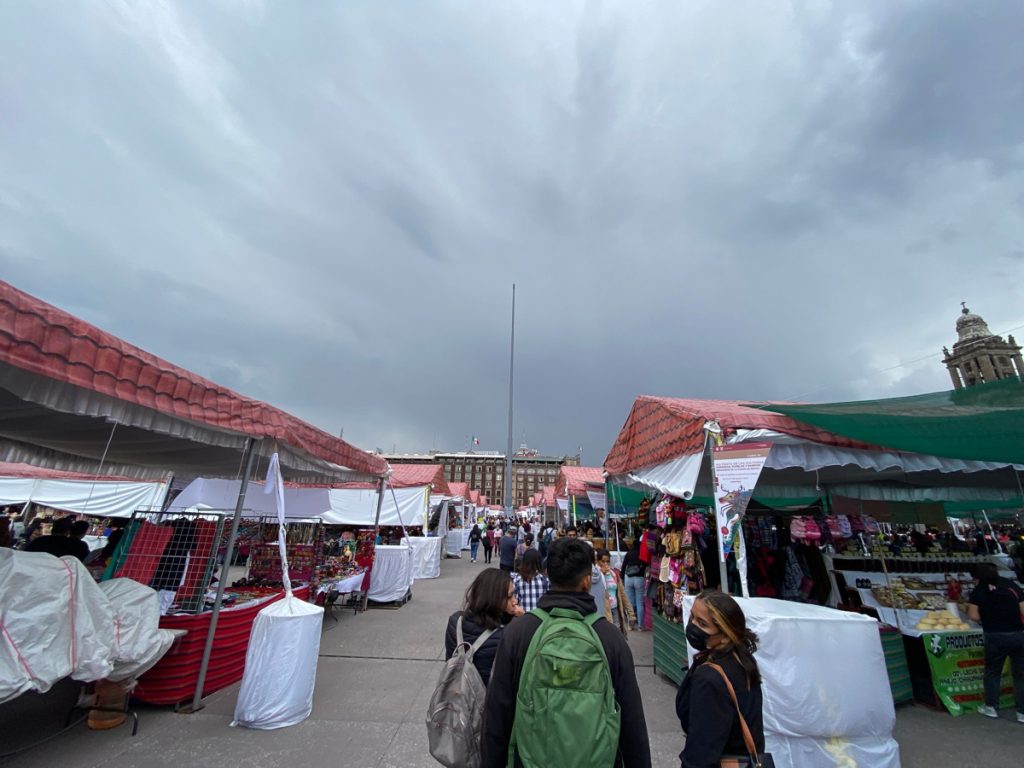
At the northeastern corner of the square was Templo Mayor, a museum at the ruins of the Mexica pyramid with twin temples which marked the very center of Tenochtitlan and therefore the Aztec Empire. The artist’s rendering of this pyramid was highly impressive, but Hernan Cortes being such a charming conquistador ordered its complete destruction 501 years ago. You know, the kind of stuff Taliban and toddlers with tantrum love to do.
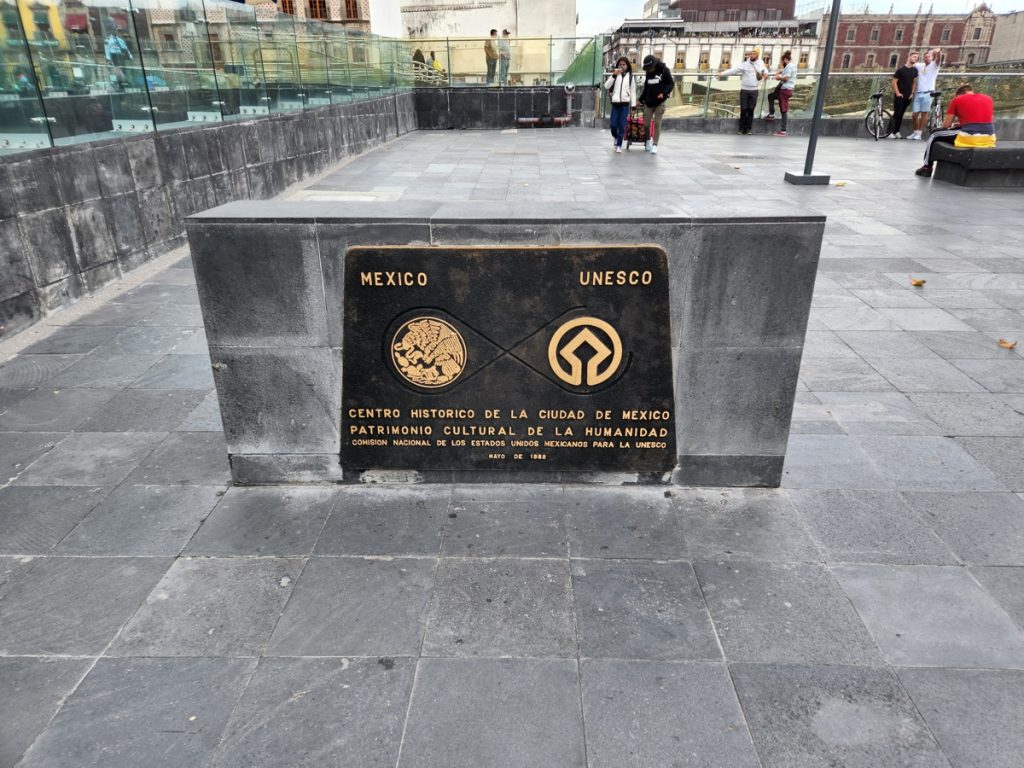
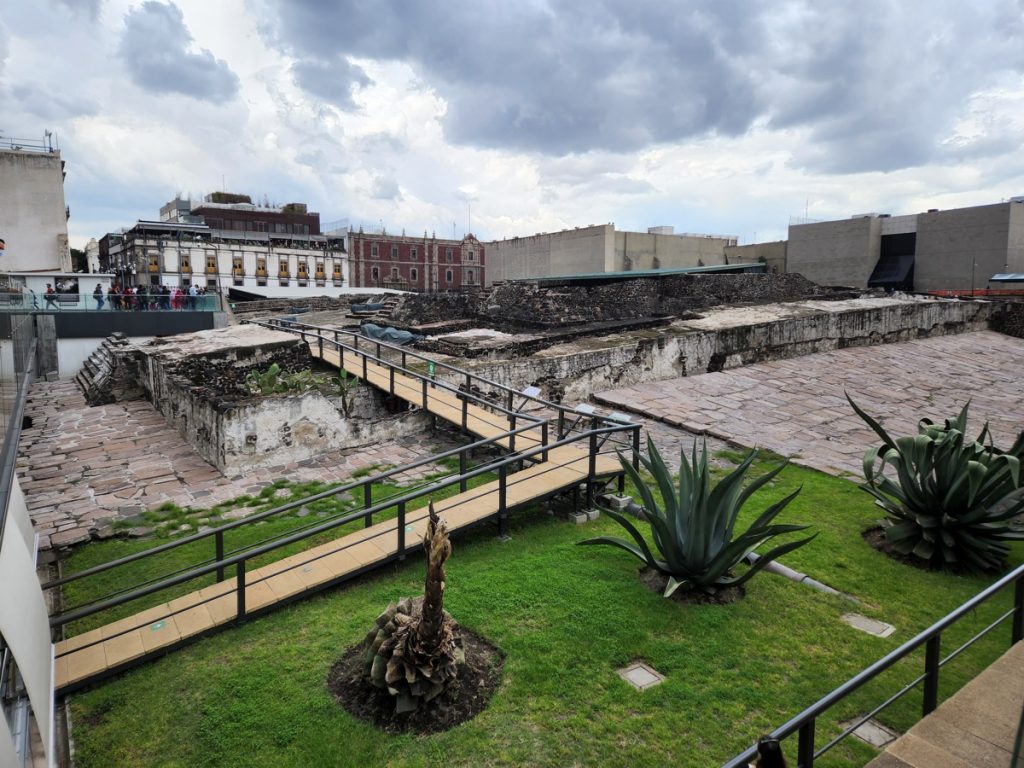
On the northern border of the square was the city’s cathedral, deliberately built over the Mexica sacred site not unlike the various things we saw in Andalucia. Cool to look at, though, like most cathedrals.

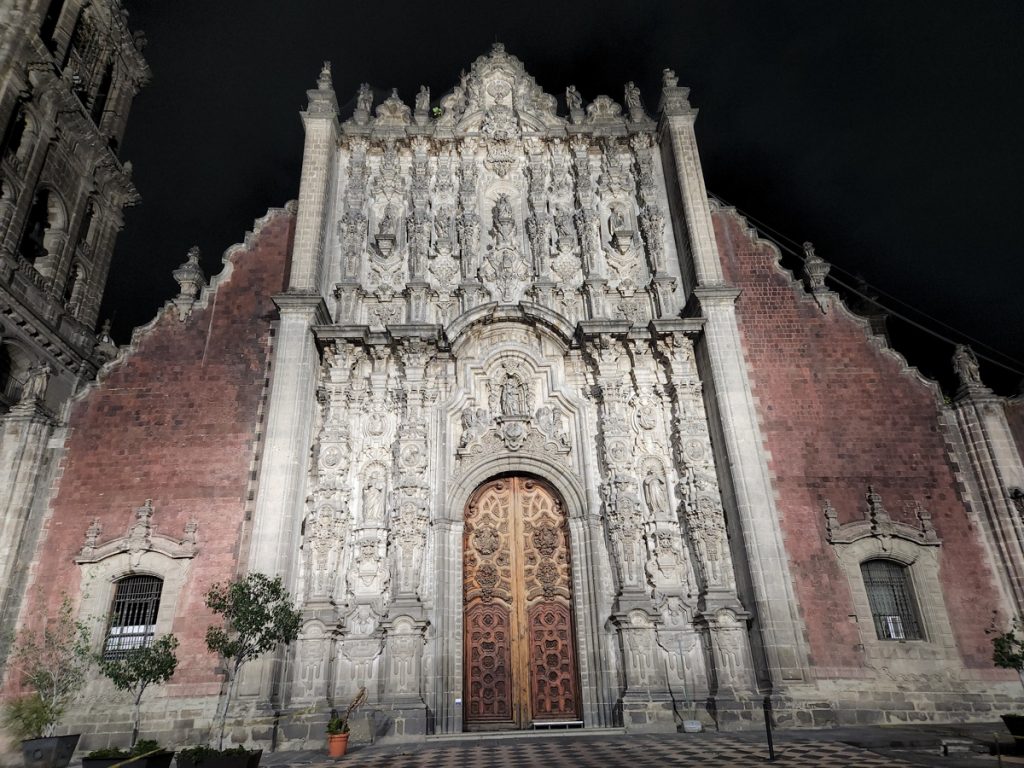
On the eastern border of the square was Palacio Nacional, a huge rectangular structure that was functionally equivalent to our White House. This palace was originally built by Hernan Cortes, using materials from Moctezuma II’s palace that he also totally destroyed. Heavy historical thoughts aside, it was cool being able to walk by Mexico’s presidential residence and see knickknack vendors and street artists hanging out right up against its walls.
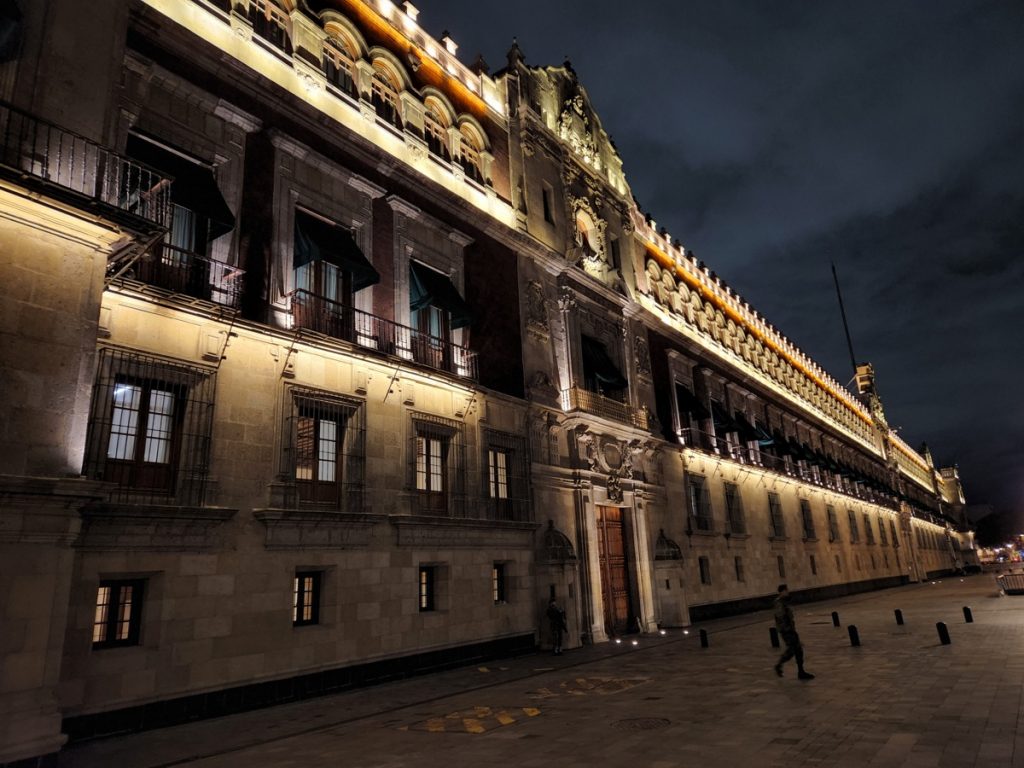
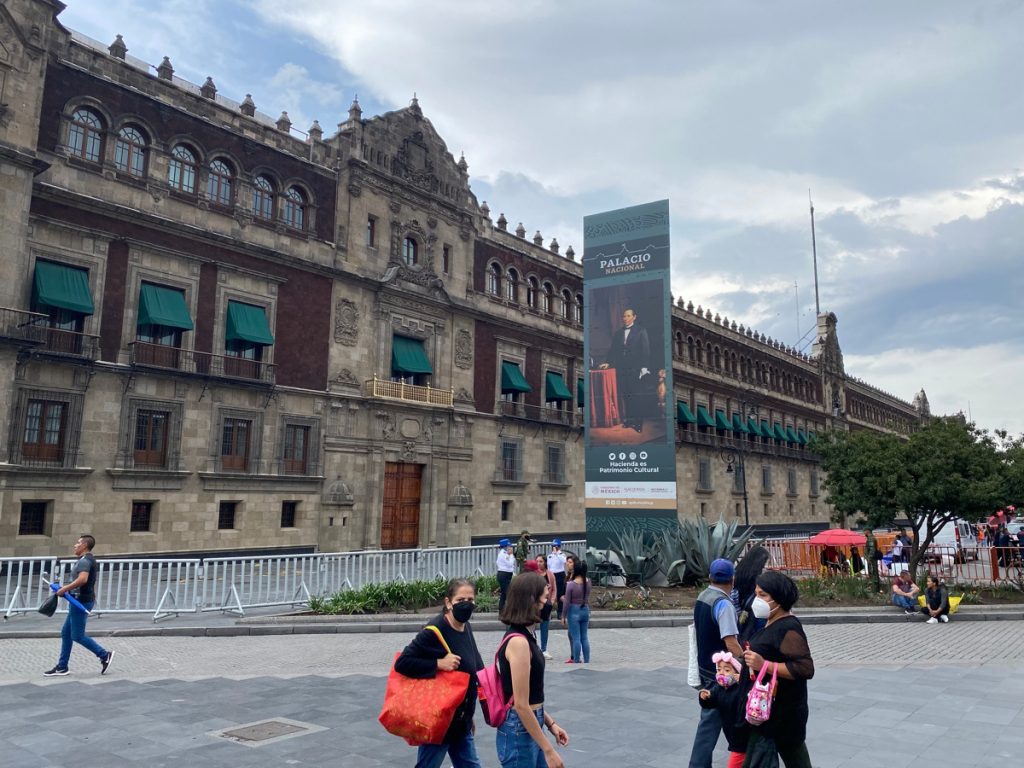
The square itself was full of contradictions. Its official name was “Plaza de la Constitucion”, but named after the 1812 Cadiz constitution, signed in Spain by the colonizers that Mexico was already actively fighting an independence war to cut ties from. The nickname “Zocalo” referred to the base of a giant monument in the square, started shortly after the independence war but was never completed. You’d think Mexicans could name a square of this importance after something more permanent.
During our visit, the square was organized for a big cultural festival, with tents of food and crafts vendors taking up most of the space.
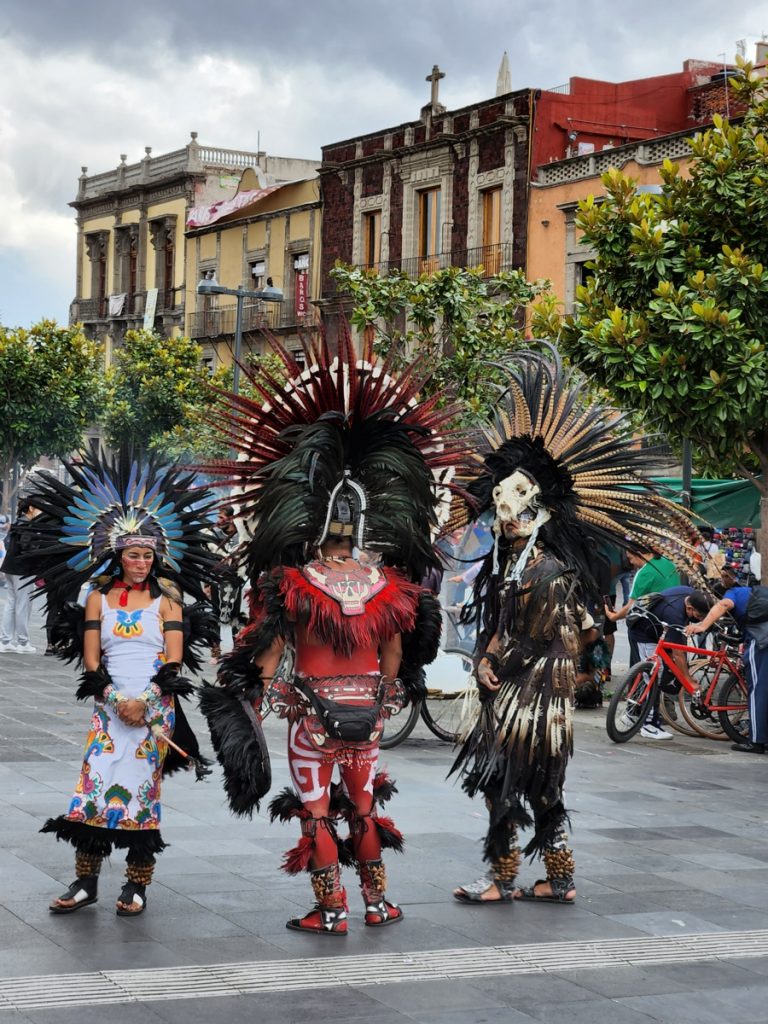
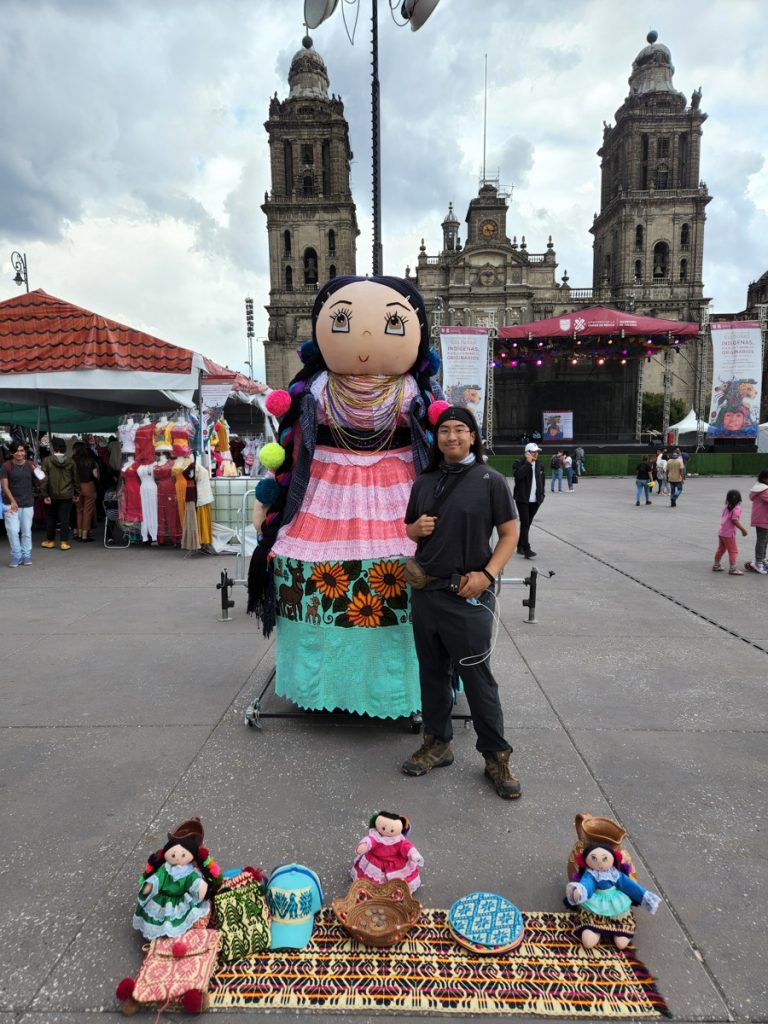
Gran Hotel Ciudad de Mexico
At the southwest corner of Zocalo was the famous department-store-turned-hotel featured in the opening sequence of Spectre, the James Bond movie. Fun fact: CDMX began hosting annual Day of the Dead parades after this movie portrayed such an event during this scene.
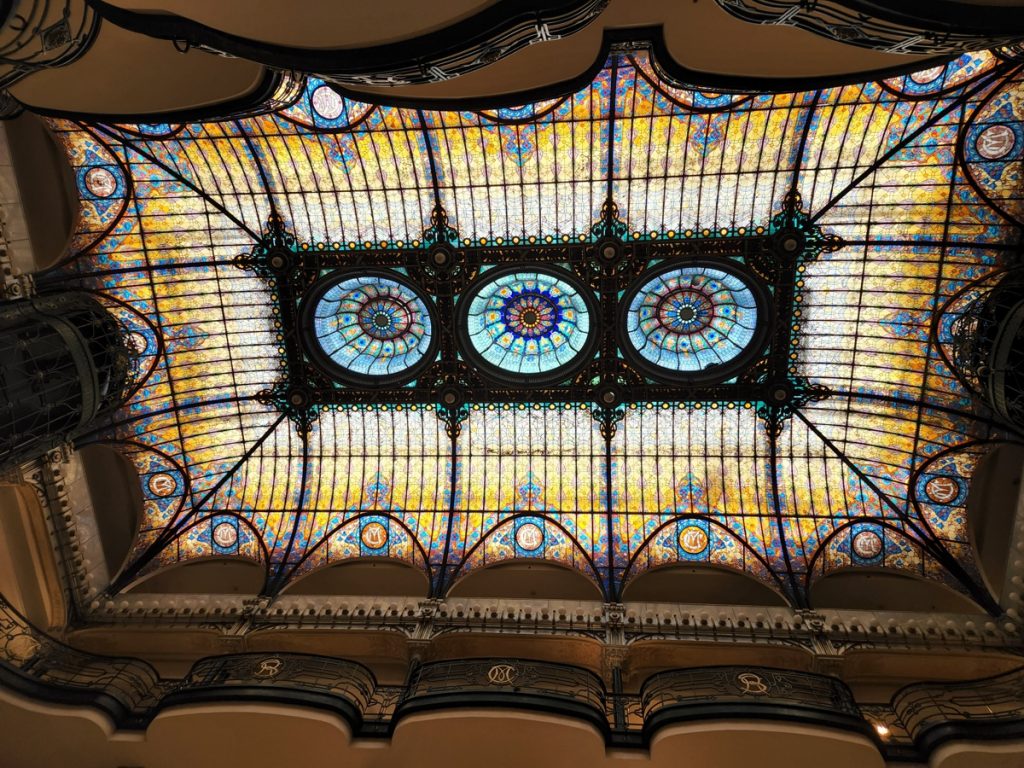
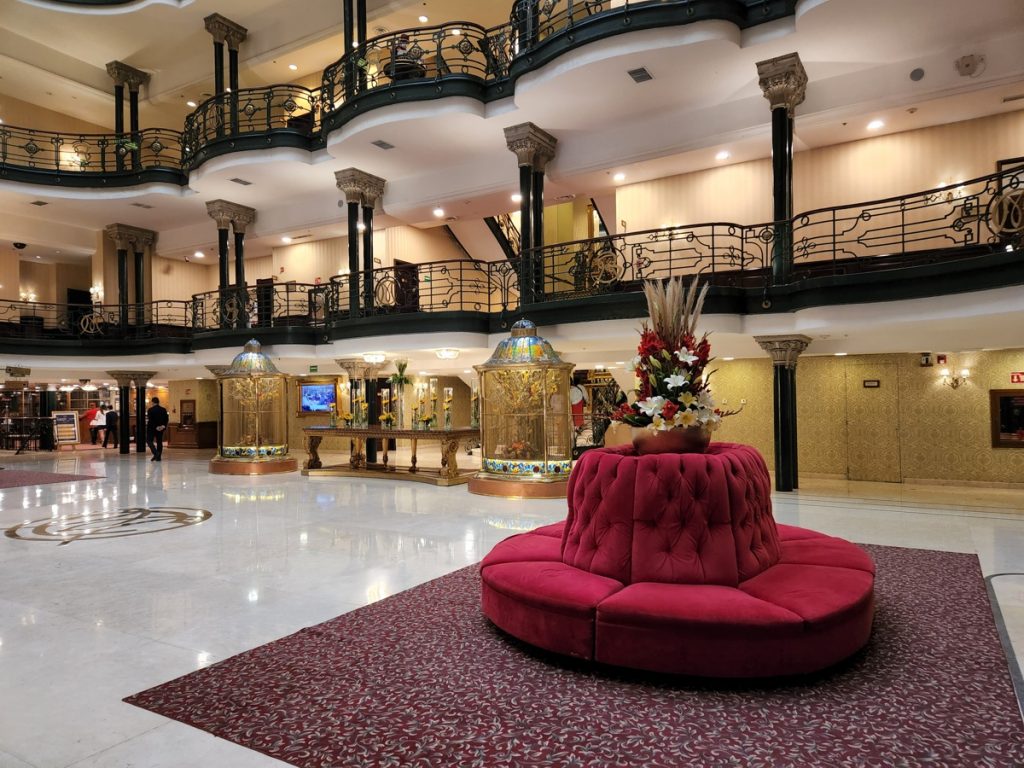
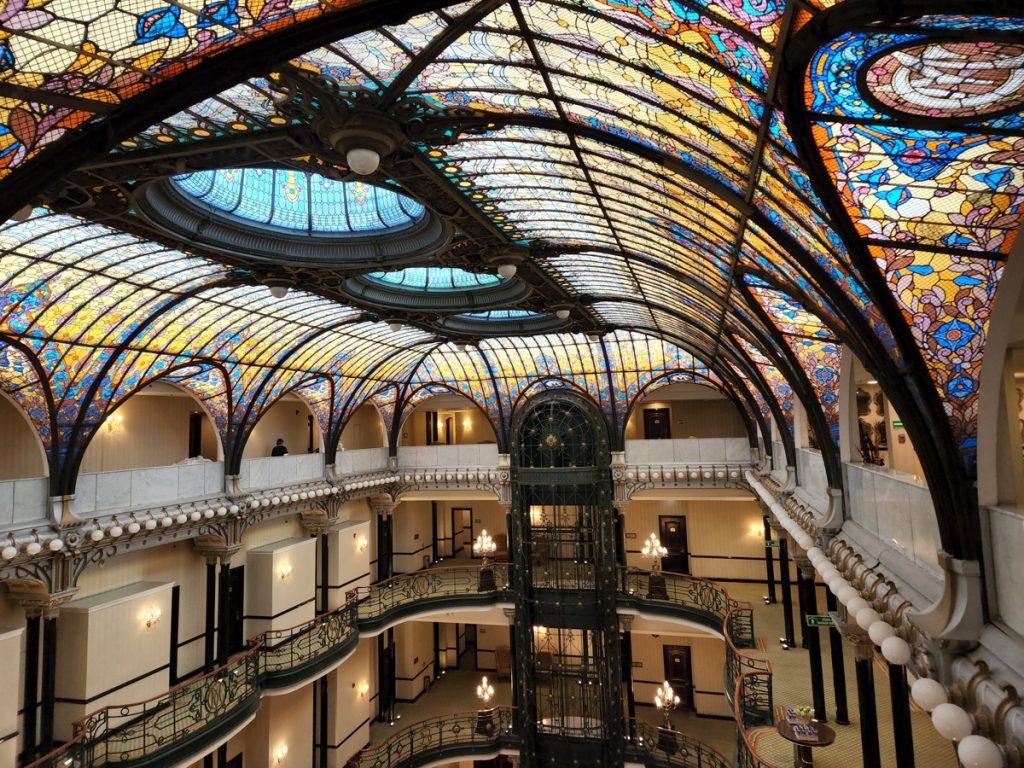
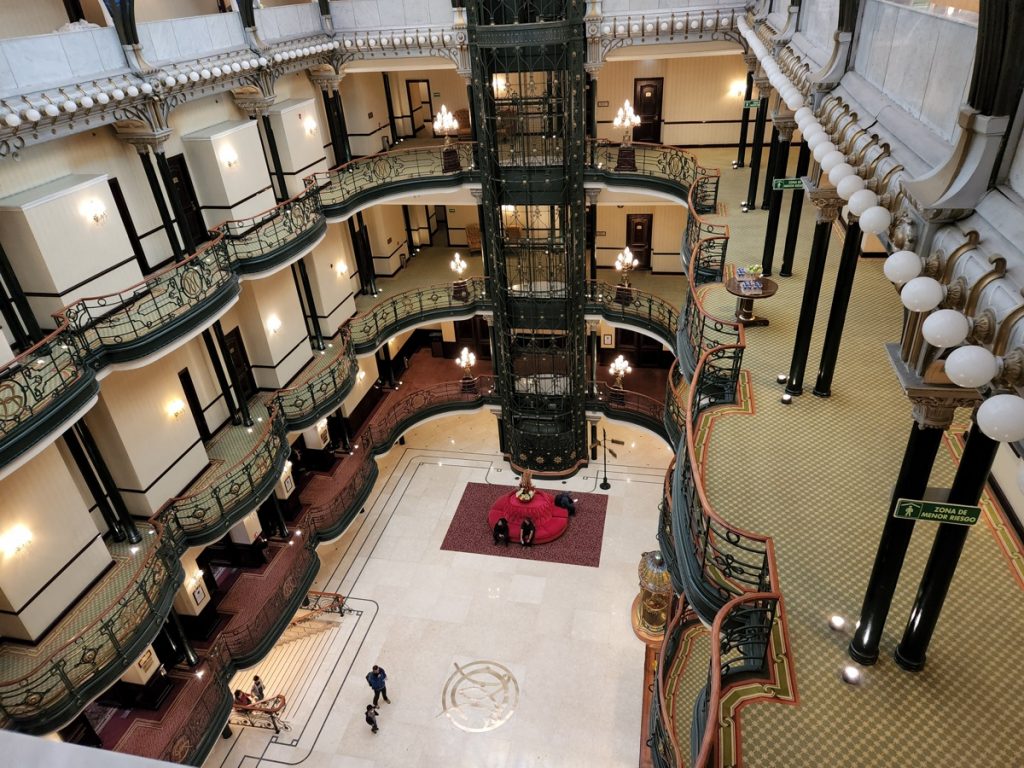
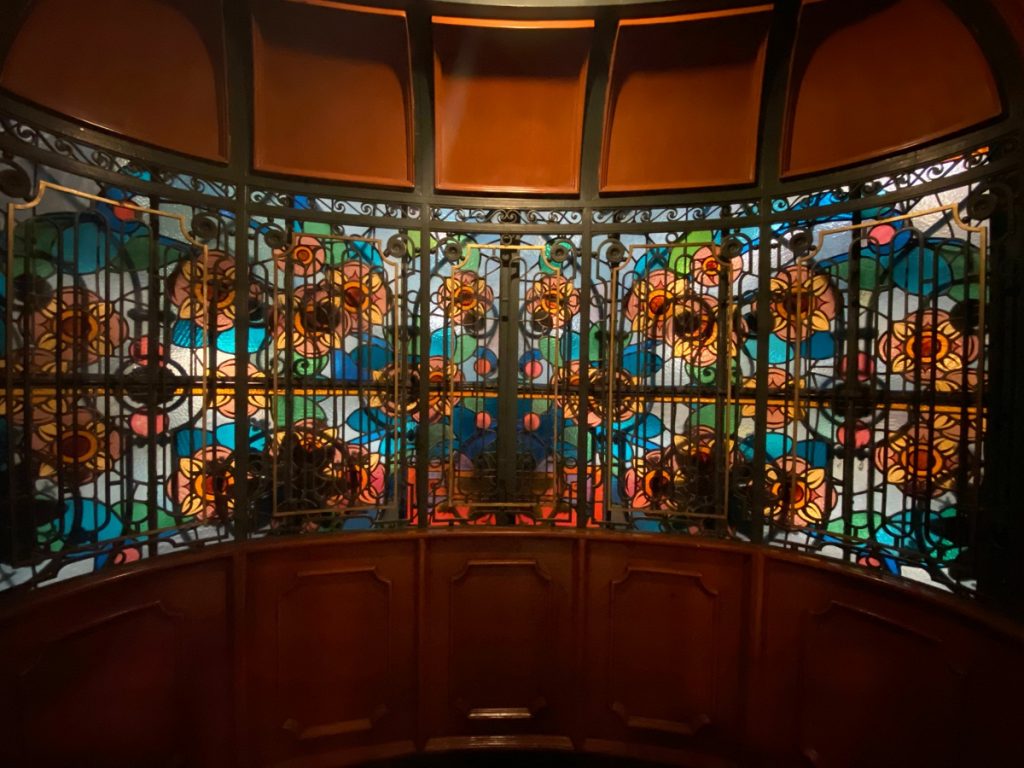
We had visited this hotel a couple days ago. Although the quiet of the night gave us a near-exclusive space, this hotel’s defining feature of stained glass ceiling didn’t look that great without sunlight. Thus we came back for a couple make-up selfies. At the same time, we had a couple hours to kill and looked into Terraza, its rooftop restaurant overlooking Zocalo.
Fortunately, no reservation was required at the moment and the hostess personally took us up to the 4th floor. Riding that ornate 20th century elevator made us feel important – though not that important because we were told to use another elevator after we finish eating. The bar had a great view even though we weren’t seated right by the railing. We each got a drink and a dessert, which was overly decadent.

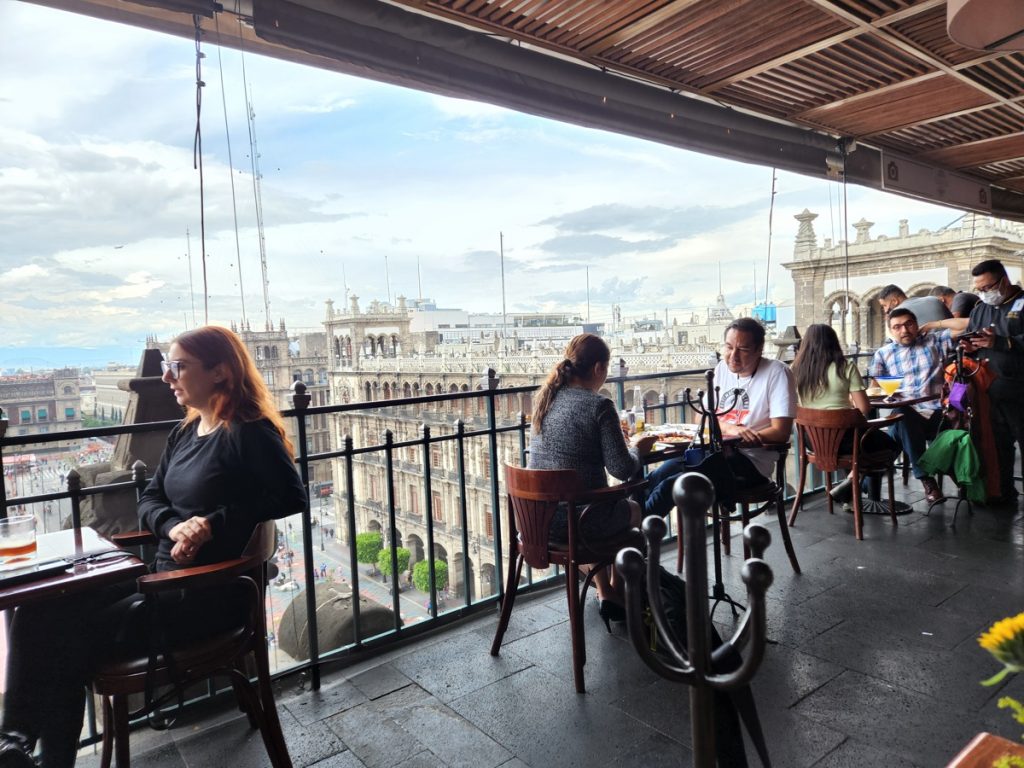
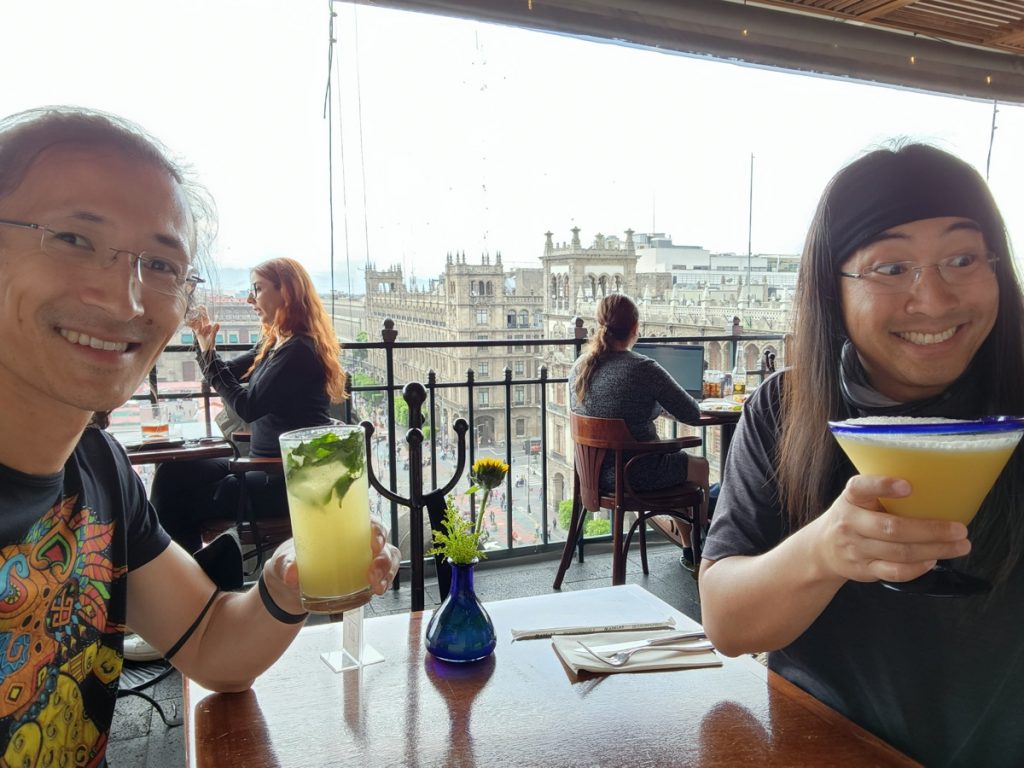
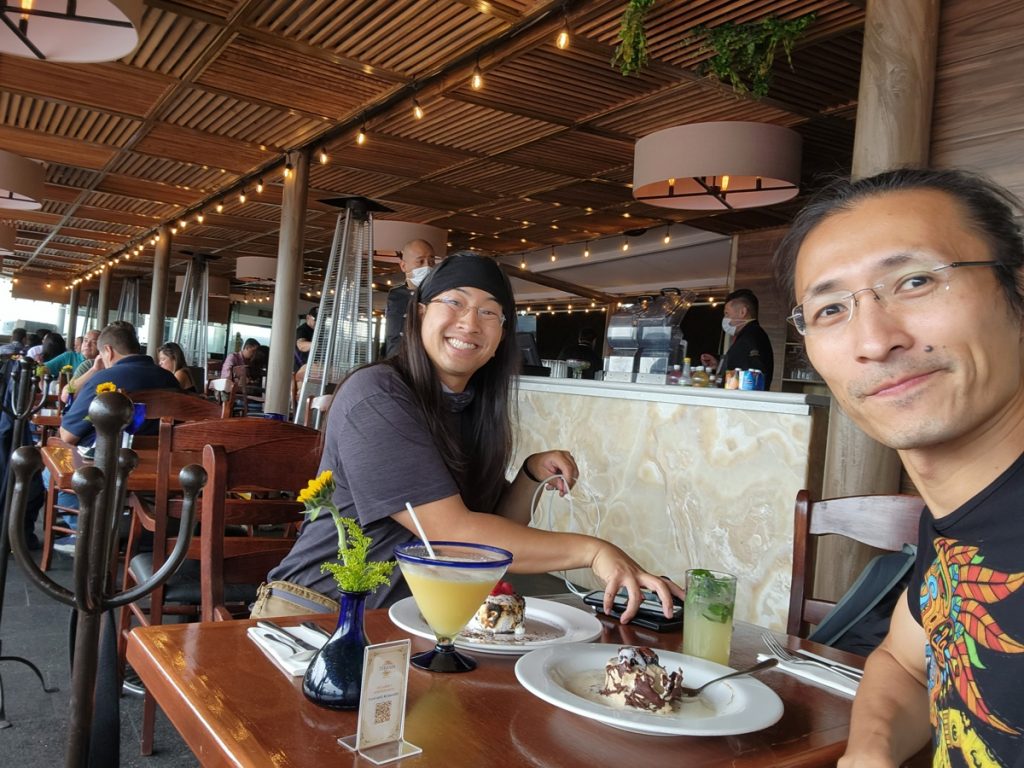
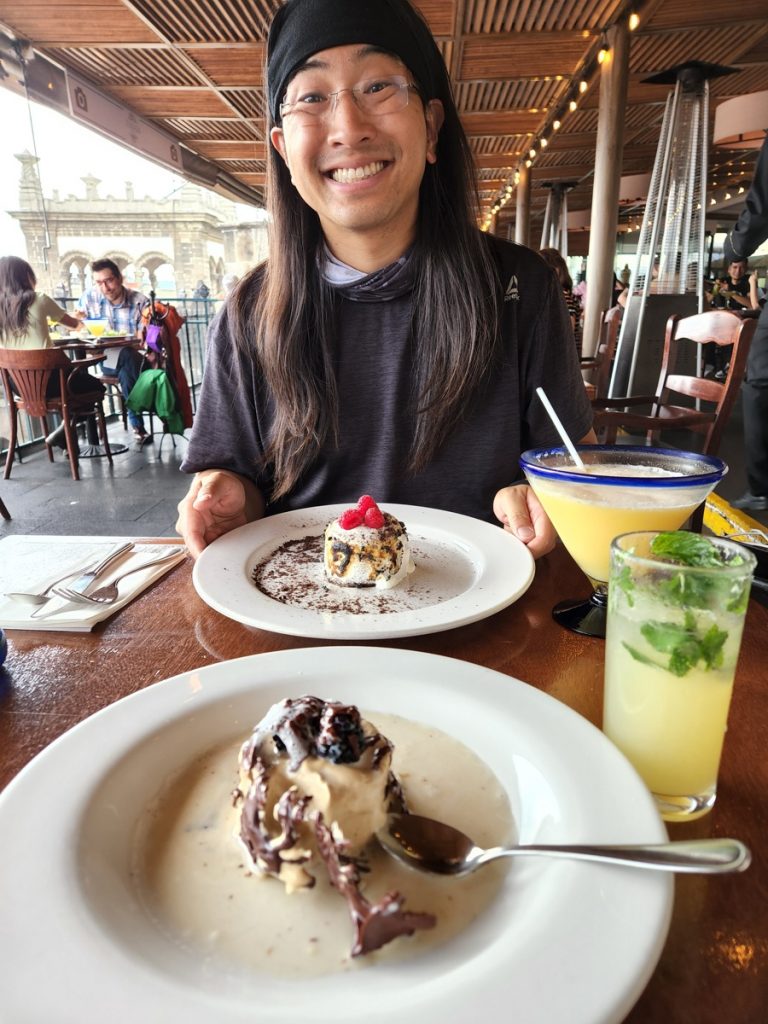
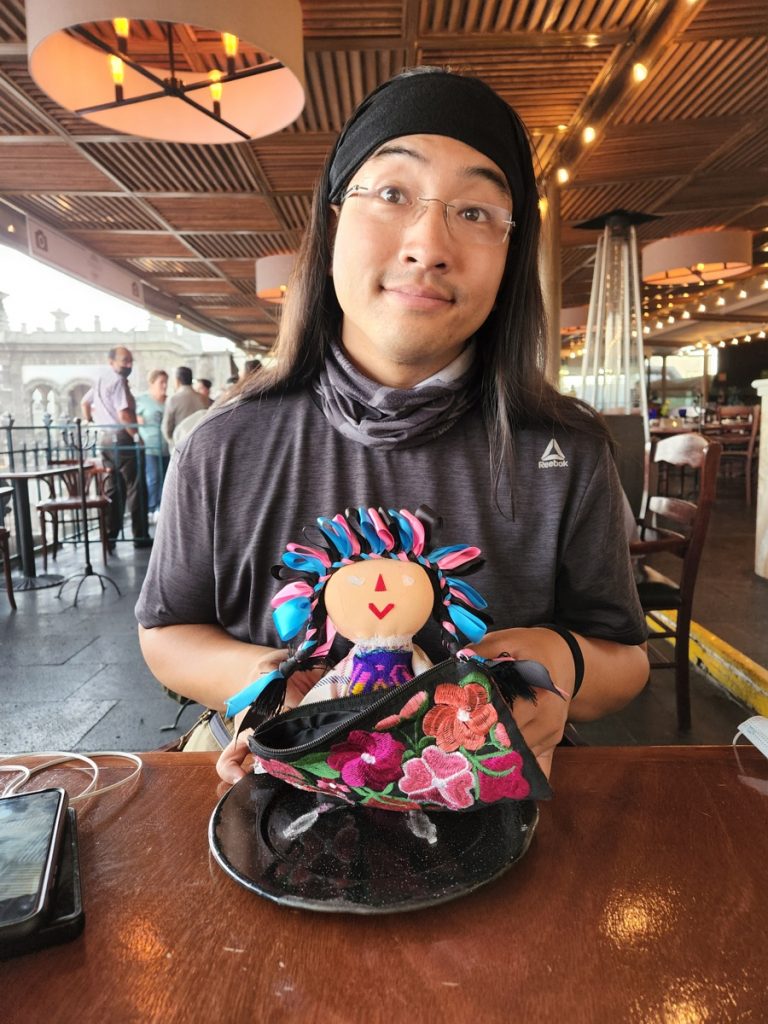
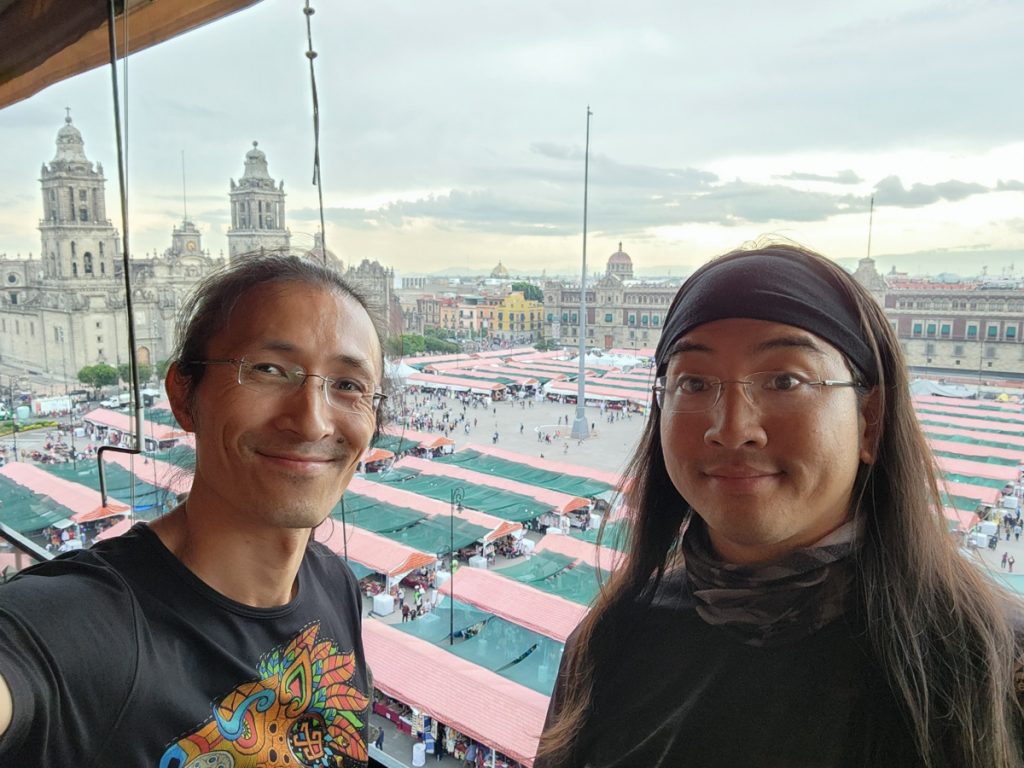
Tacos de Canasta Los Especiales
Immediately after having our afternoon dessert at an establishment worthy of James Bond, we went down to earth (e.g. street level) and had some poor men’s tacos around the corner.
Tacos de canasta, or basket tacos, used to be pre-made, mass produced, and sold from the back of bicycles. They tend to feature the commoners’ ingredients like potatoes and beans, too, instead of fatty meats hot off the griddle. This particular restaurant’s operation was very much about feeding the masses. Each taco cost 8 pesos ($0.40 USD) and we ordered a five-taco assortment combo with a drink.
We adored the ambience, but eating tacos while full wasn’t a great idea. Also because these tacos were piled on top of one another in a giant basket, oil had soaked through everything including the tortilla. Even though no fatty meat was involved, basket tacos felt super greasy and heavy. The stomach wasn’t grateful for this snack.
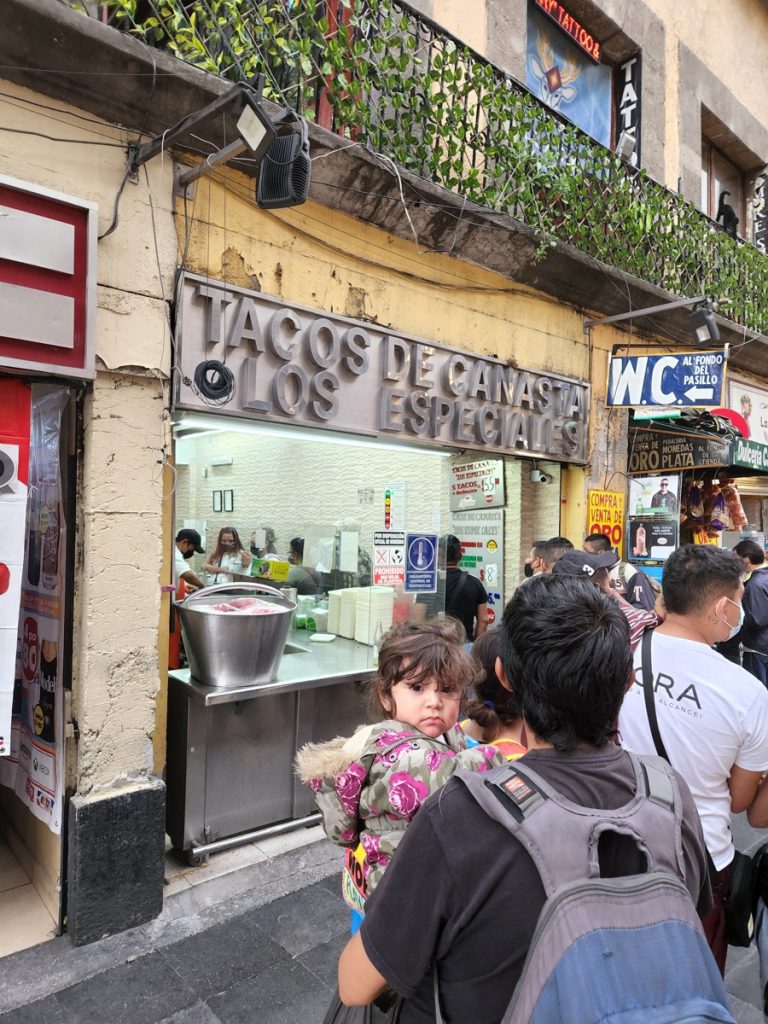
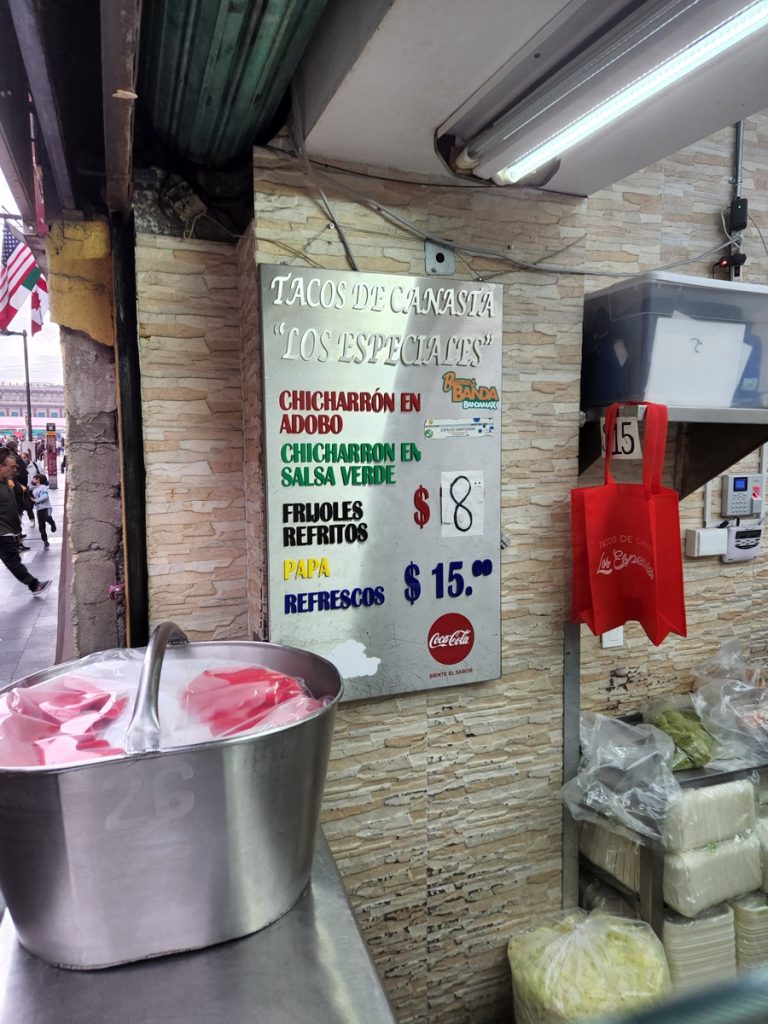
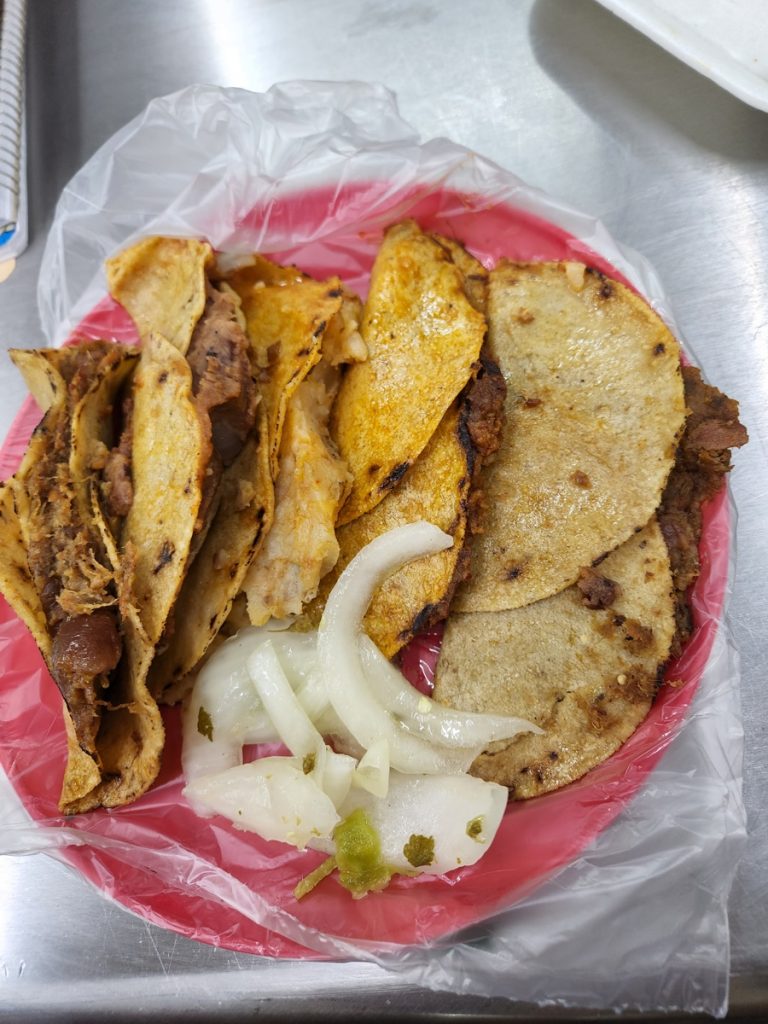
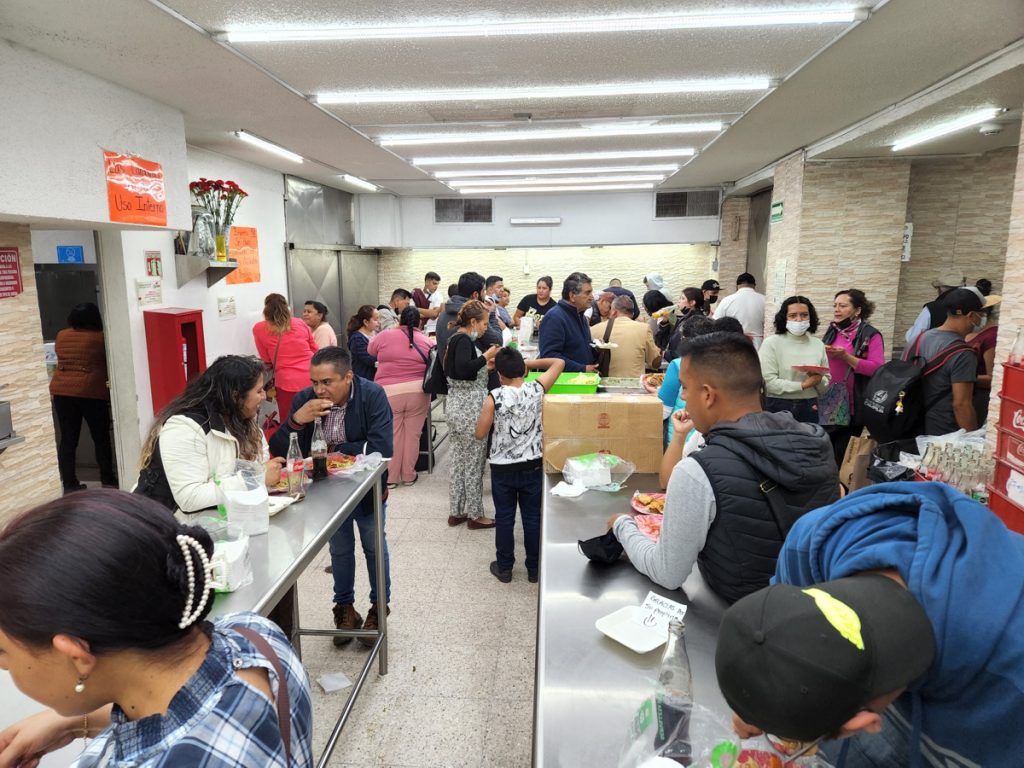
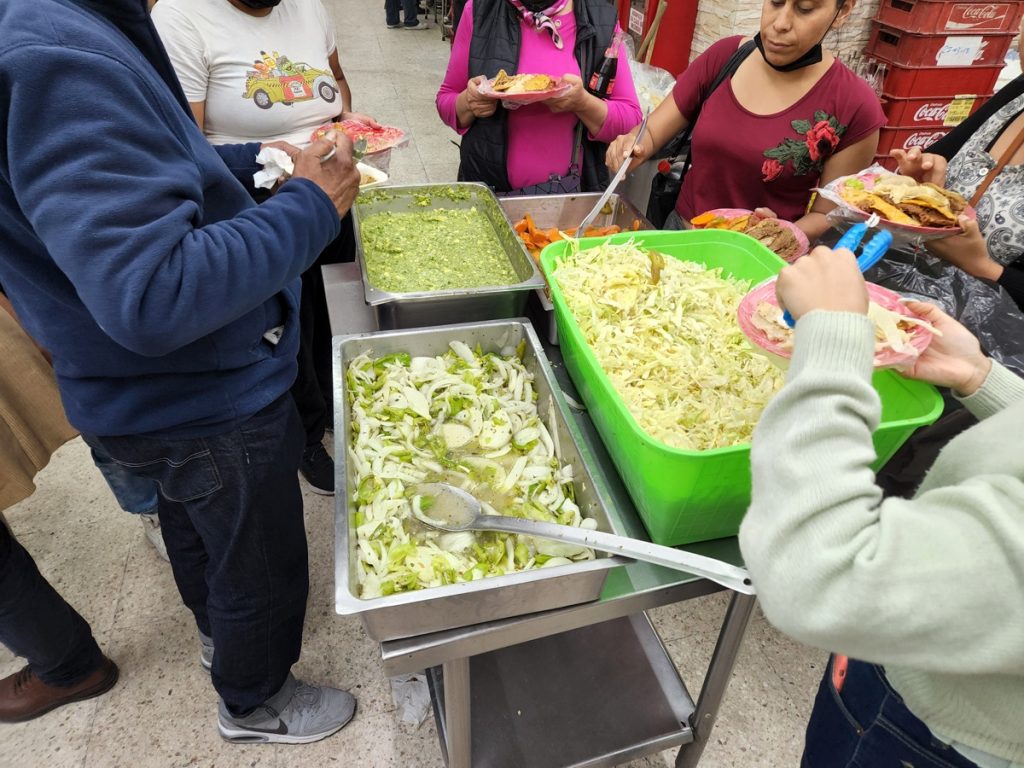
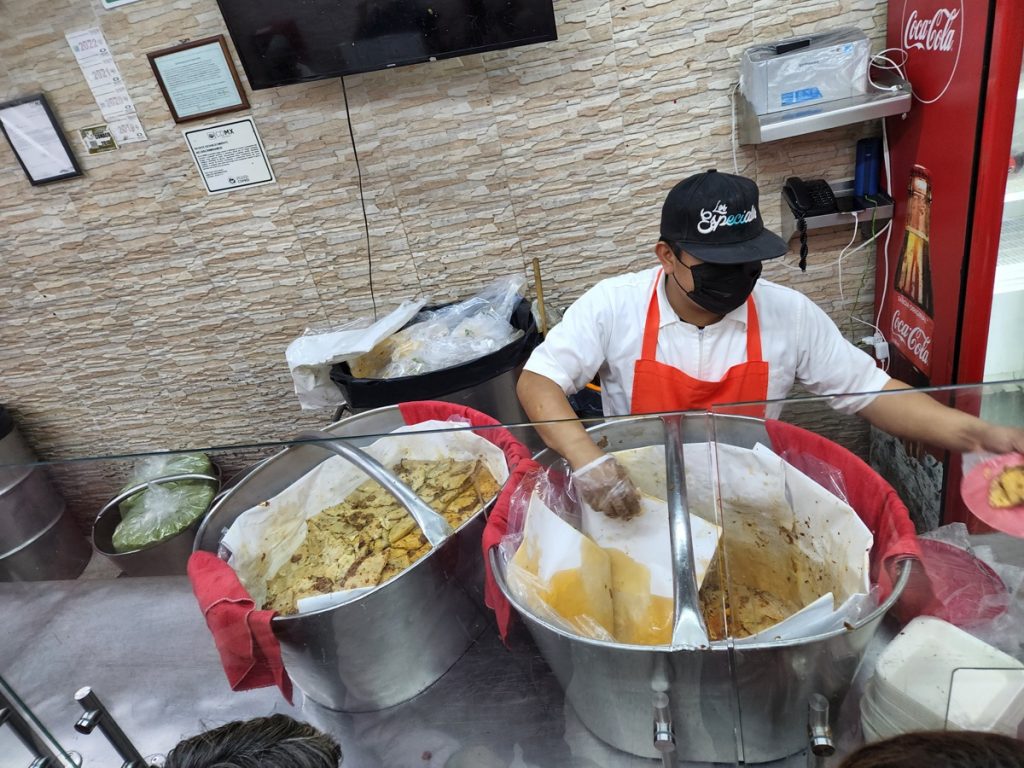
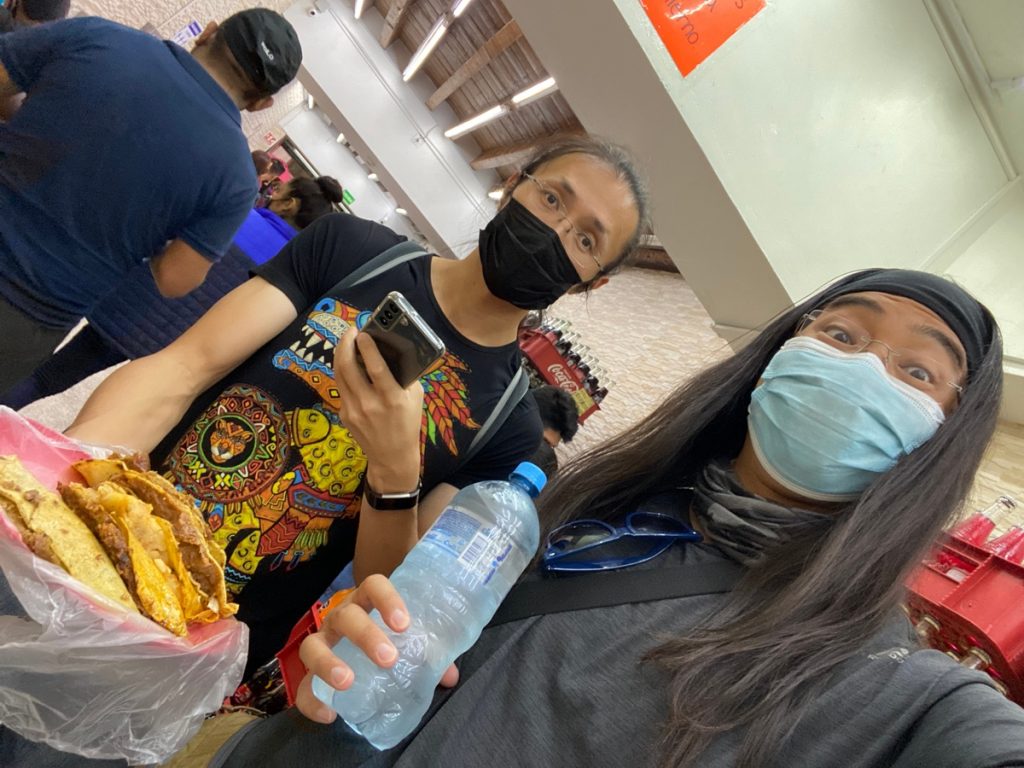
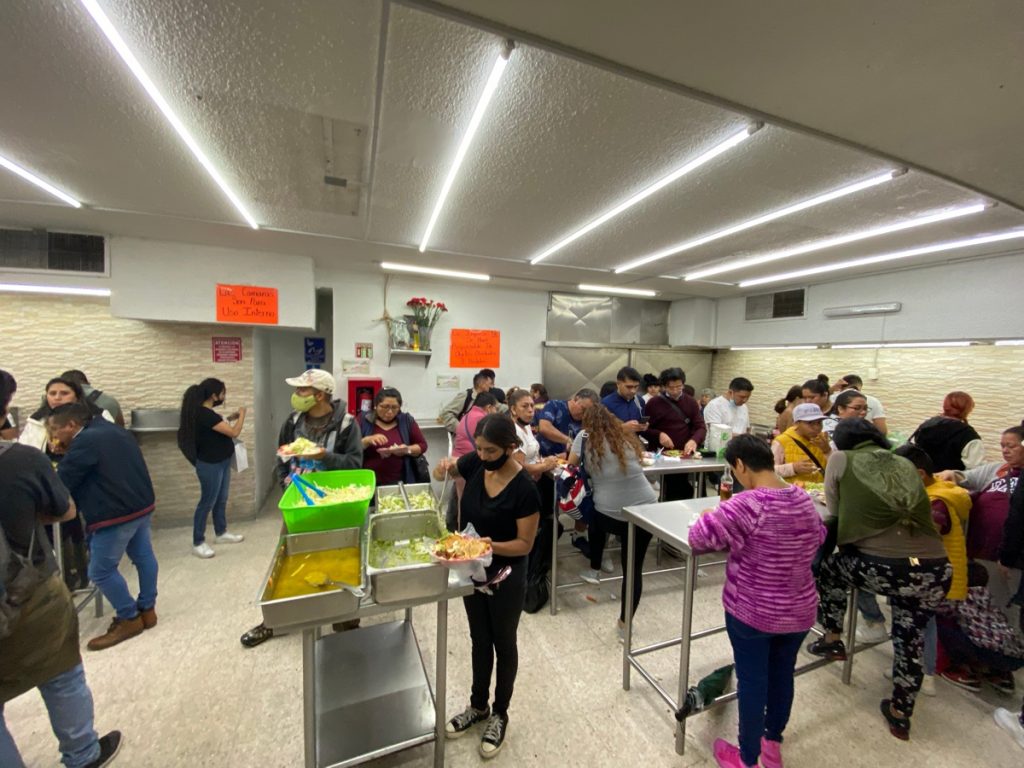
La Reforma – Monumento a la Revolucion & Angel de la Independencia
It was our last night in CDMX. We were exhausted and ready to turn in, but both of us were also somewhat taken aback by how quickly time had gone by. Let’s take a walk to digest a little? Sure! And that walk turned into a 3-hour stroll.
It was 8:30pm and raining, but we had both packed rain jackets and it was our chance to put them to use. First we saw Monumento a la Revolucion, a big mausoleum for the heroes of the Mexican Revolution of 1910. Then we walked down Paseo de la Reforma, a major avenue named to commemorate the reforms of the 1850s. Finally we reached Angel de la Independencia, a statue atop a tall column in a traffic roundabout that celebrated Mexico’s War of Independence of 1810s.

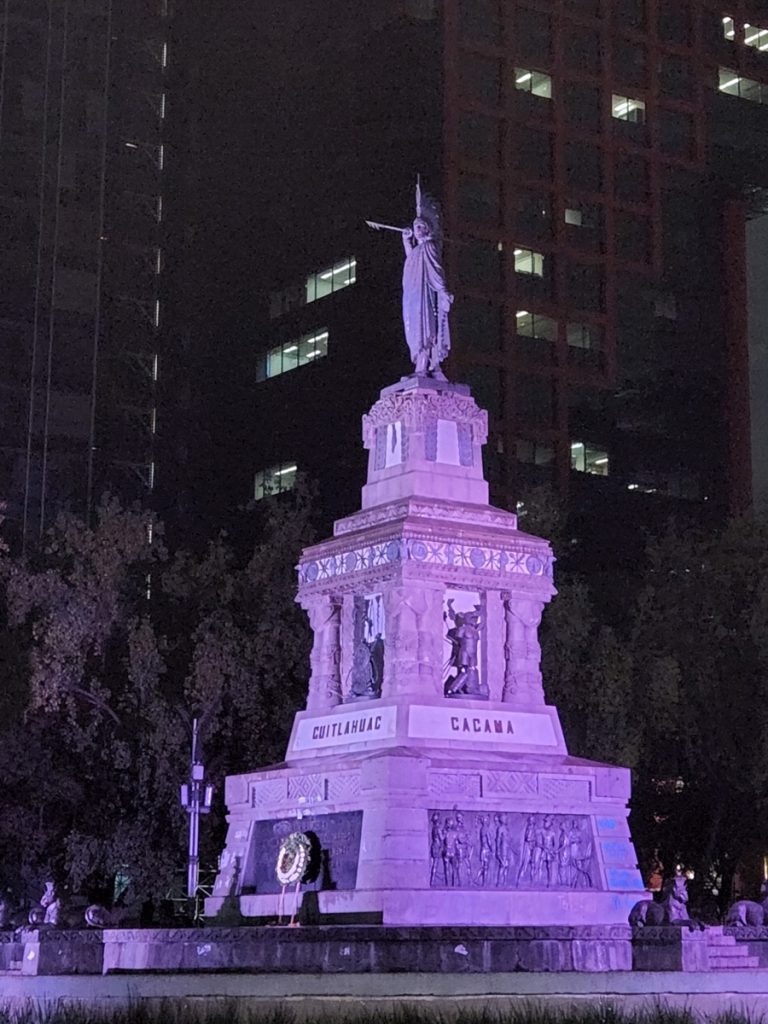

The large monuments were impressive, and it was fun crossing the 4-lane roundabout to hang out at the Angel. But the most enjoyable part of the evening was just walking down Paseo de la Reforma, an 8-lane arterial road with plenty of green space and sandwiched between modern financial and commercial skyscrapers. Crime and safety had been on our minds the entire trip because of Mexico’s general reputation in the United States, but we had not come across anything worthy of being described as creepy. This last night out was especially peaceful, with the space feeling reminiscent of downtown Taipei or Seoul. Additionally, although the road was designed for a lot of vehicular throughput, it was perfectly walkable with wide sidewalks, tree-covered walkways, benches, and artwork everywhere.
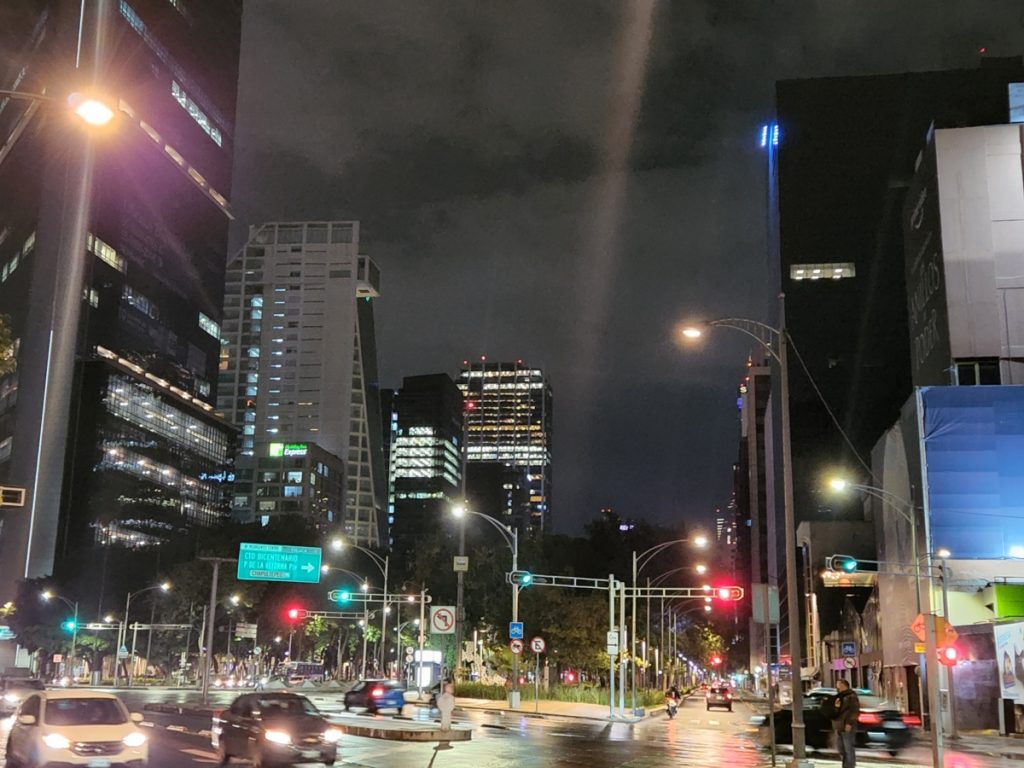
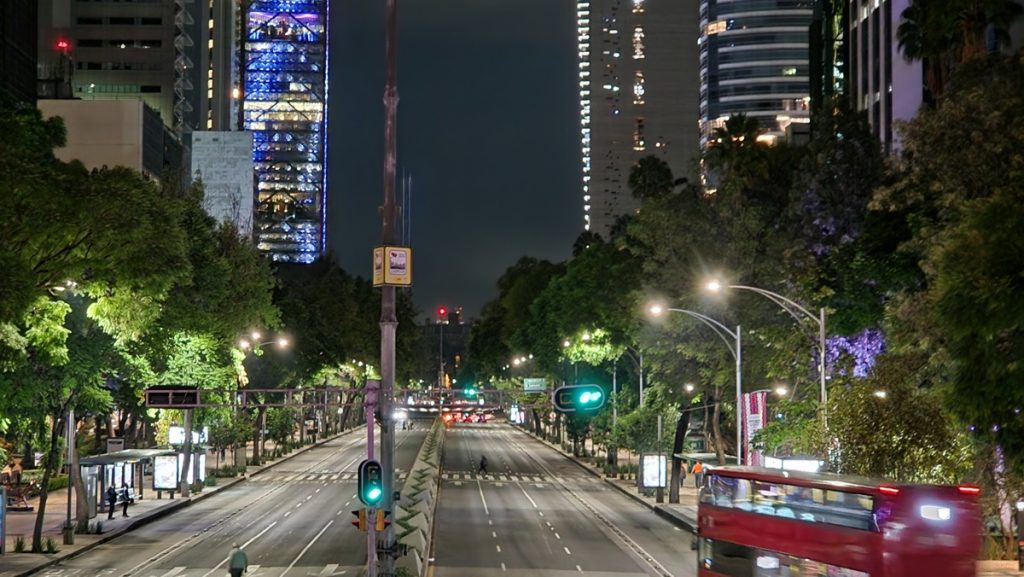

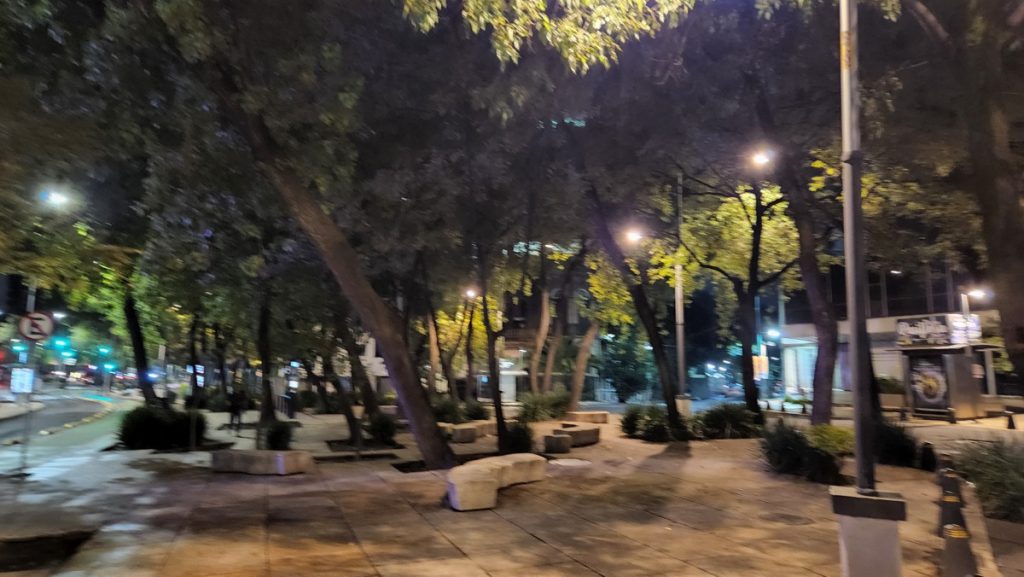
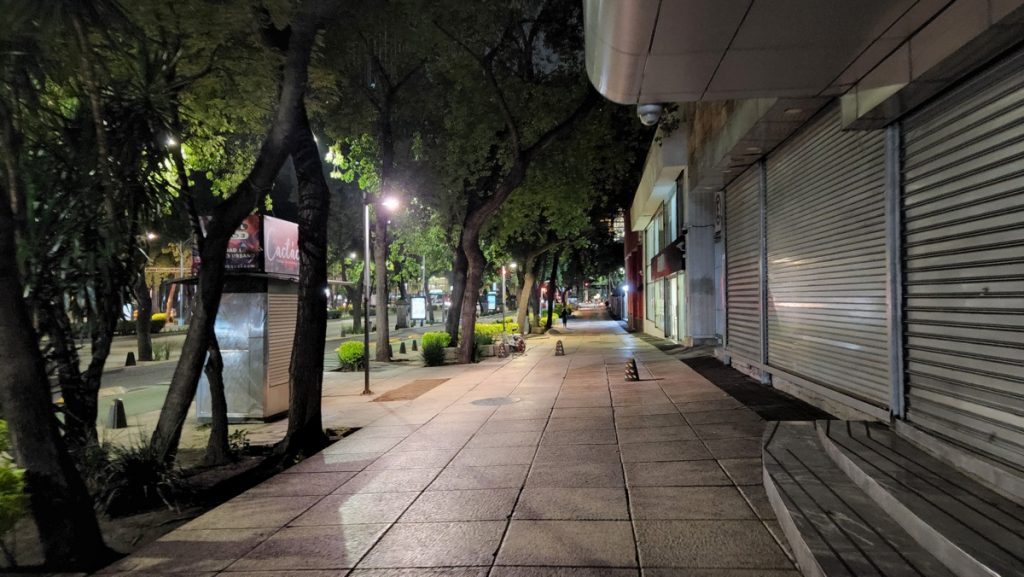
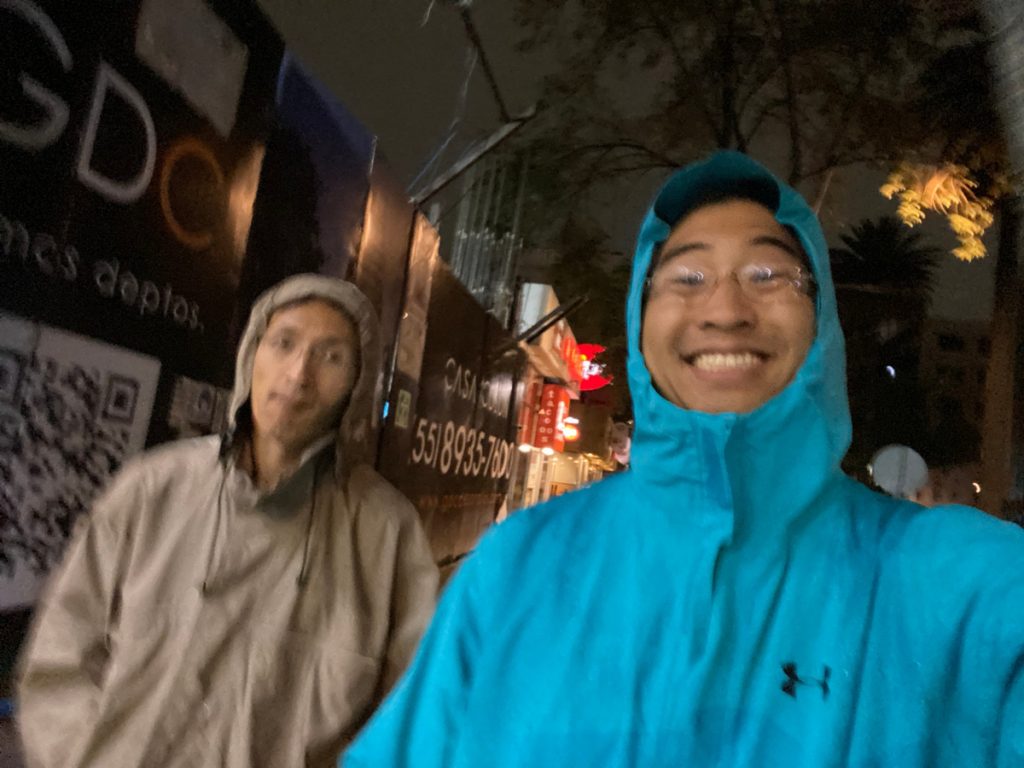
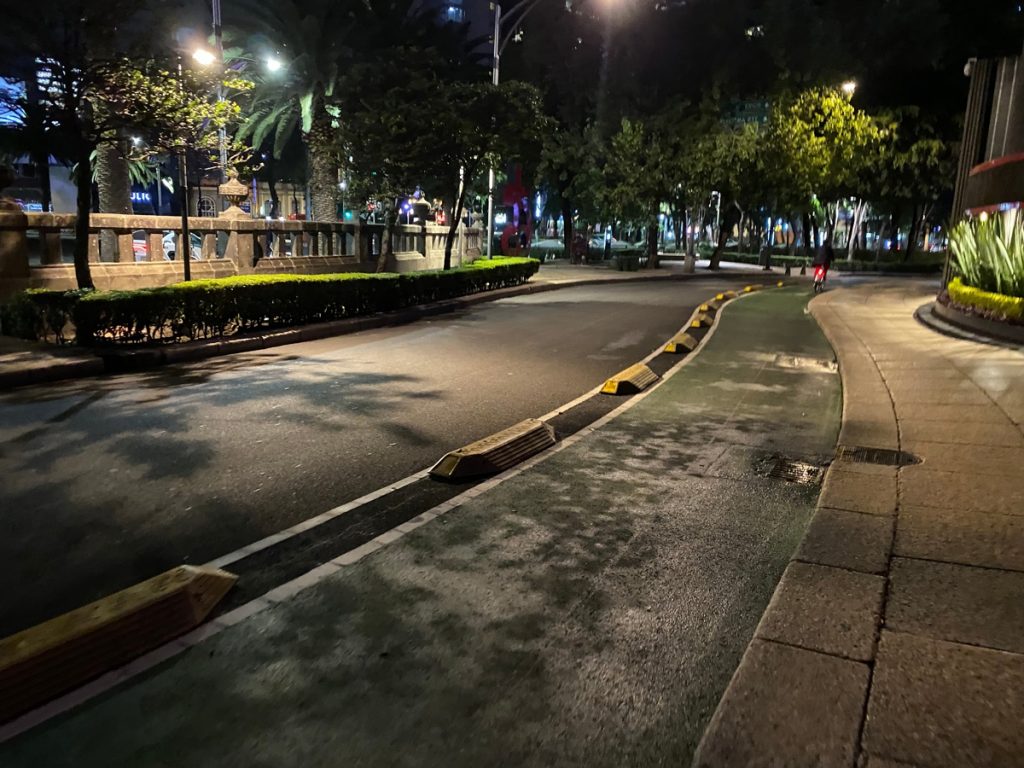
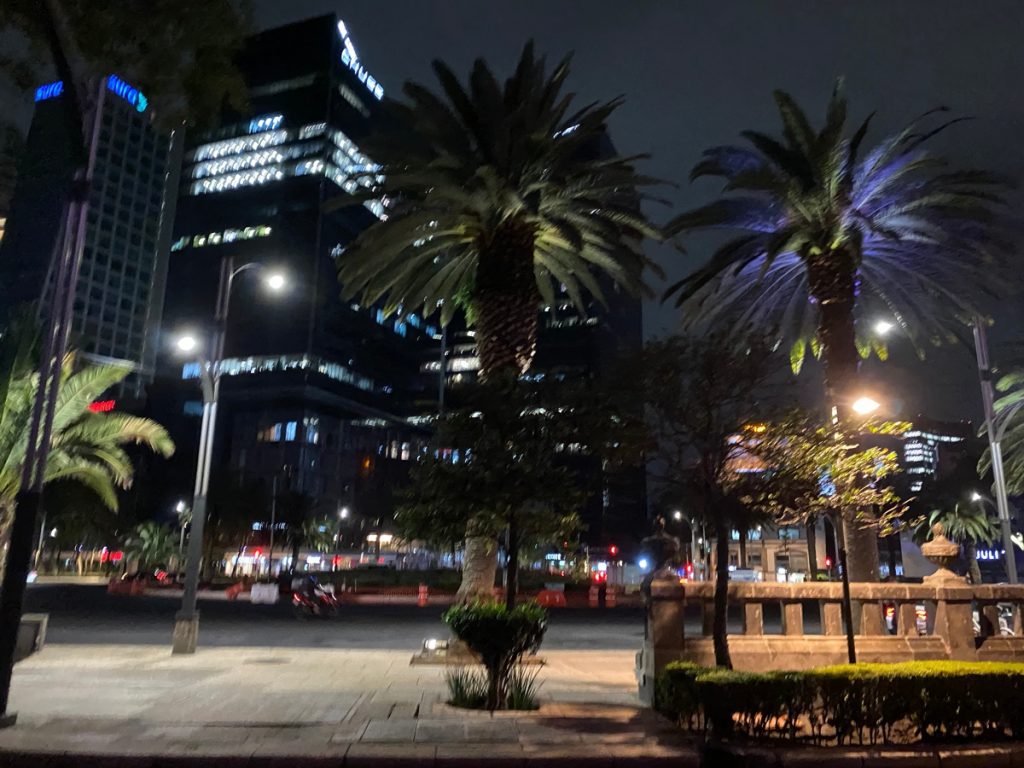
CDMX 2022 Trip Index
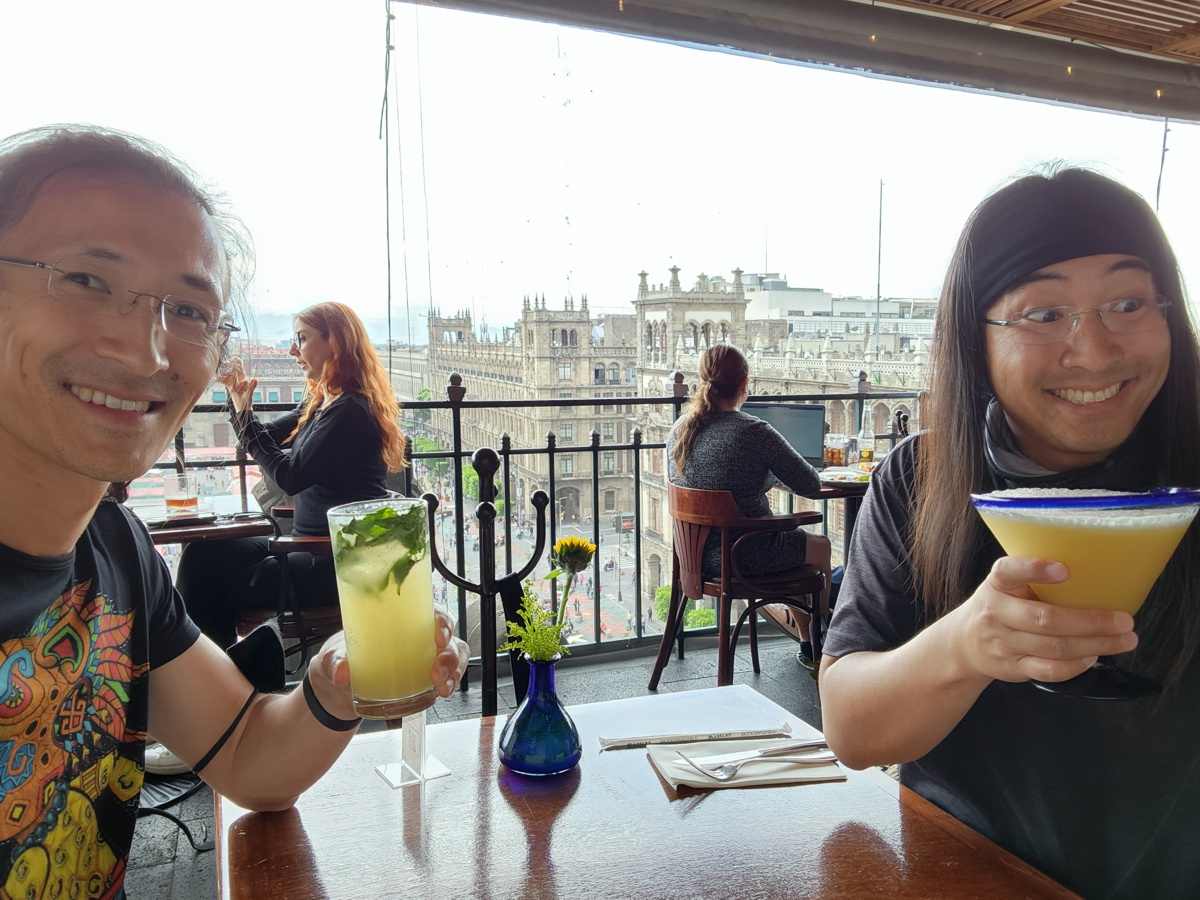
CDMX 2022 (7/8) – Food Adventures – Peter's Blog
September 5, 2022 at 8:27 pm[…] Day of the James Bond Hotel […]
CDMX 2022 (8/8) – Random Observations – Peter's Blog
September 8, 2022 at 11:52 pm[…] from Tokyo to Sevilla to CDMX have to do with how people live their lives in cities. From public transit outage to garbage collection, dense urban living anywhere has to embrace elements that are similarly […]